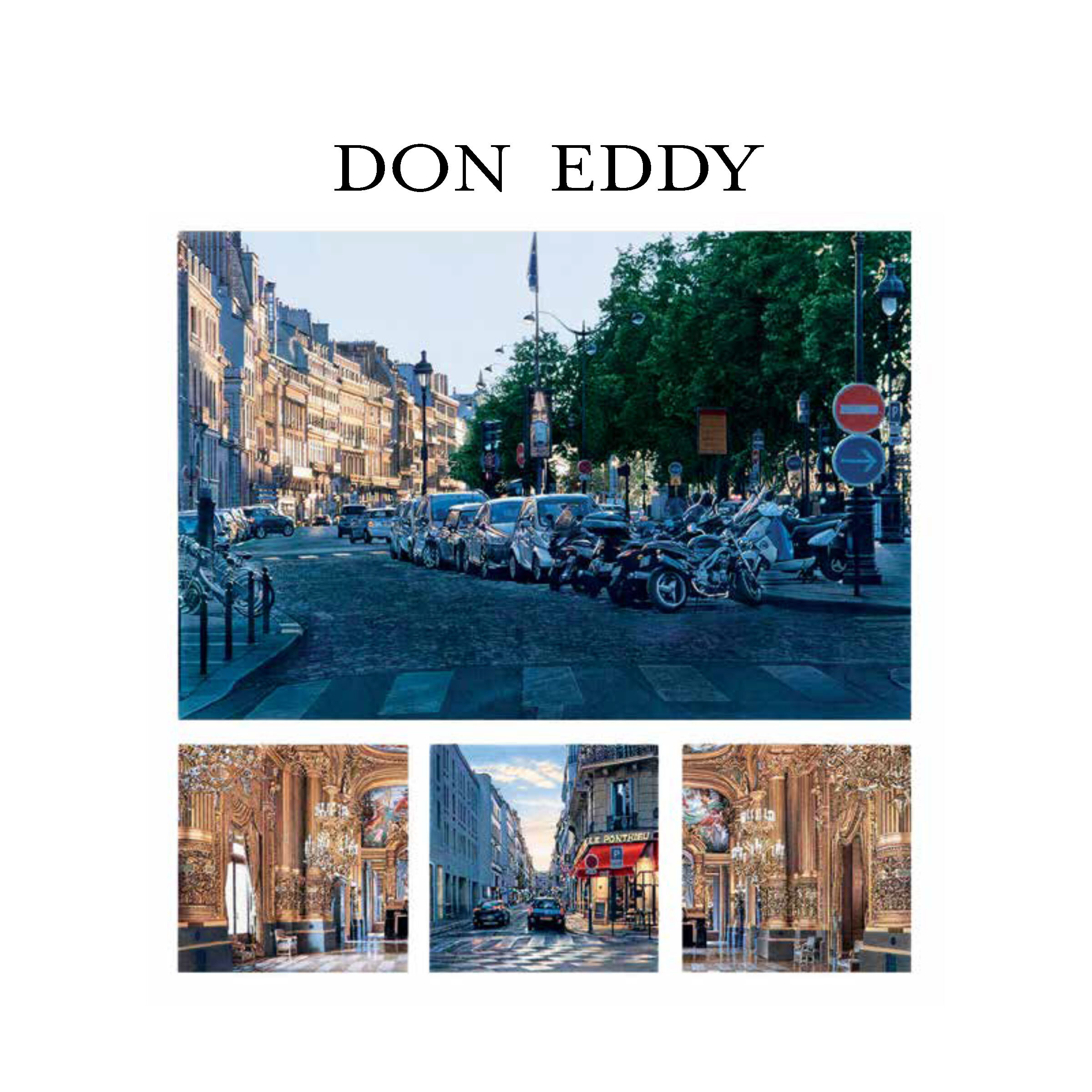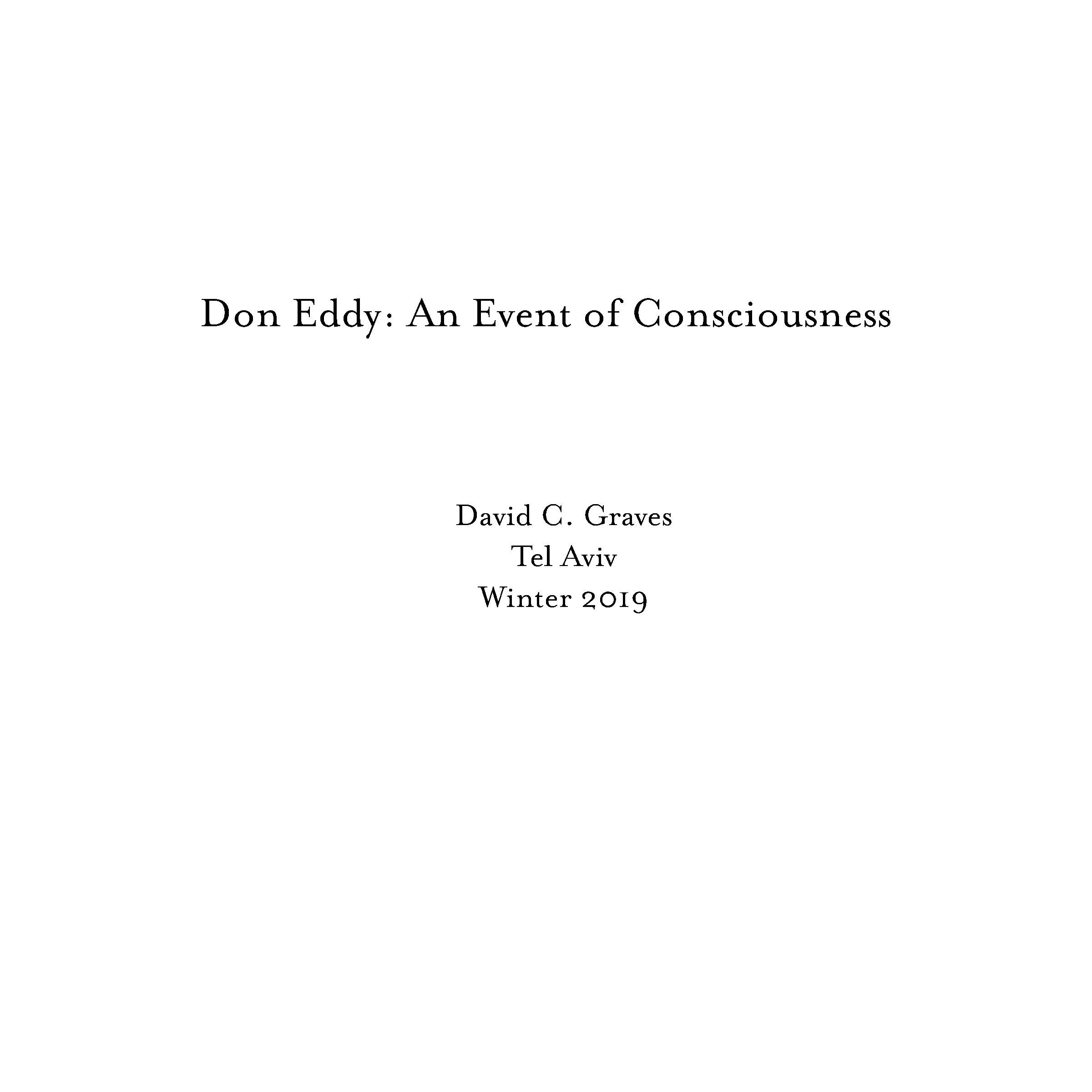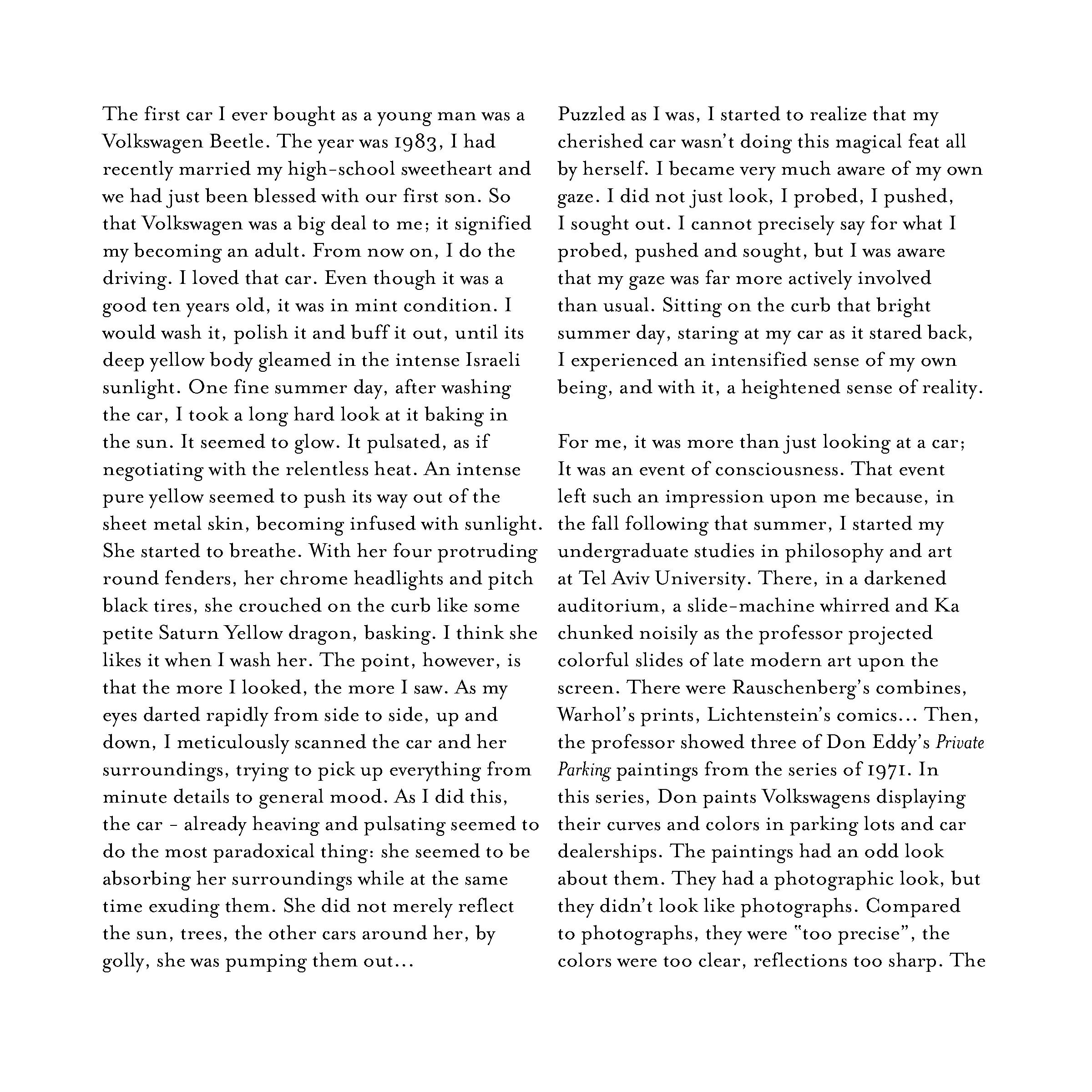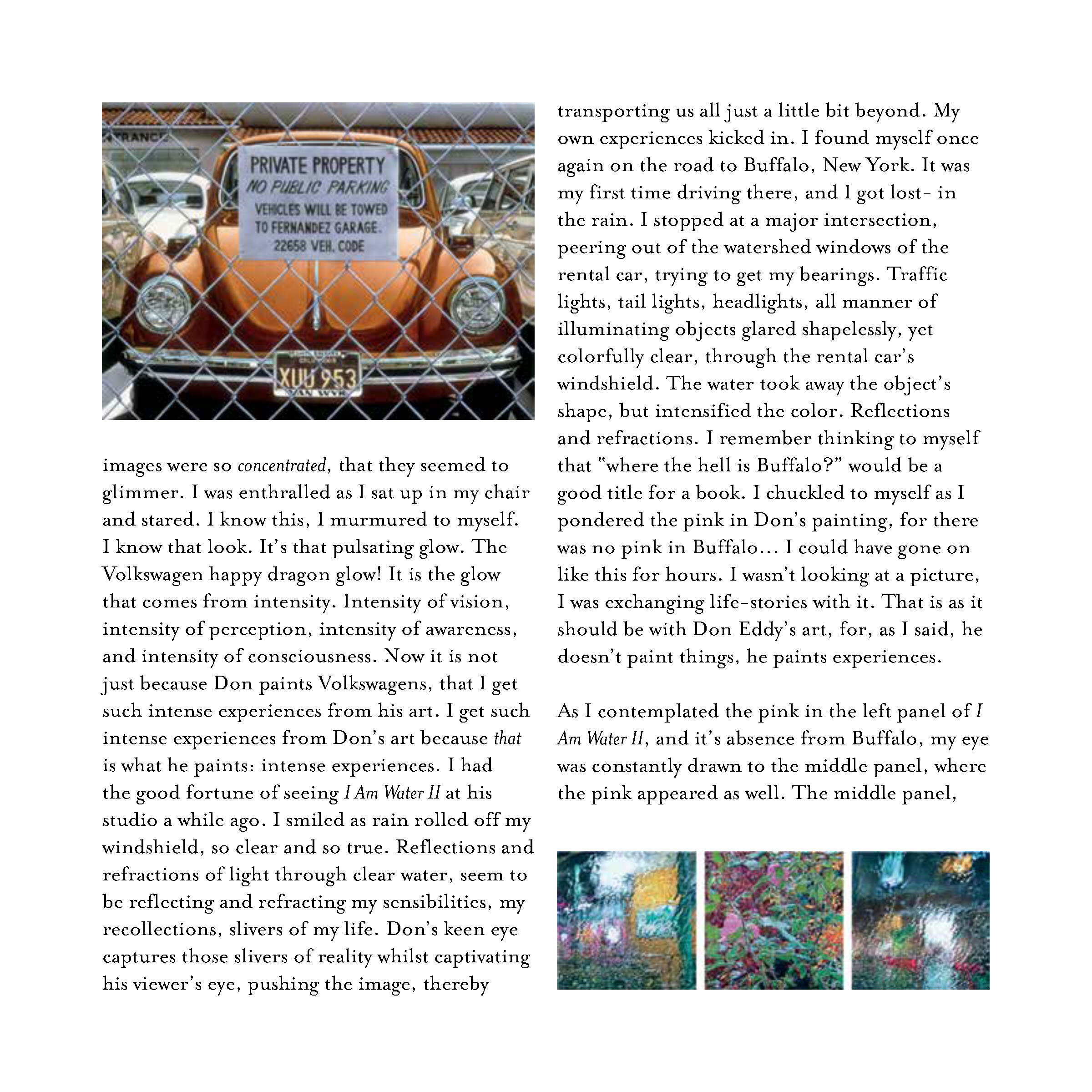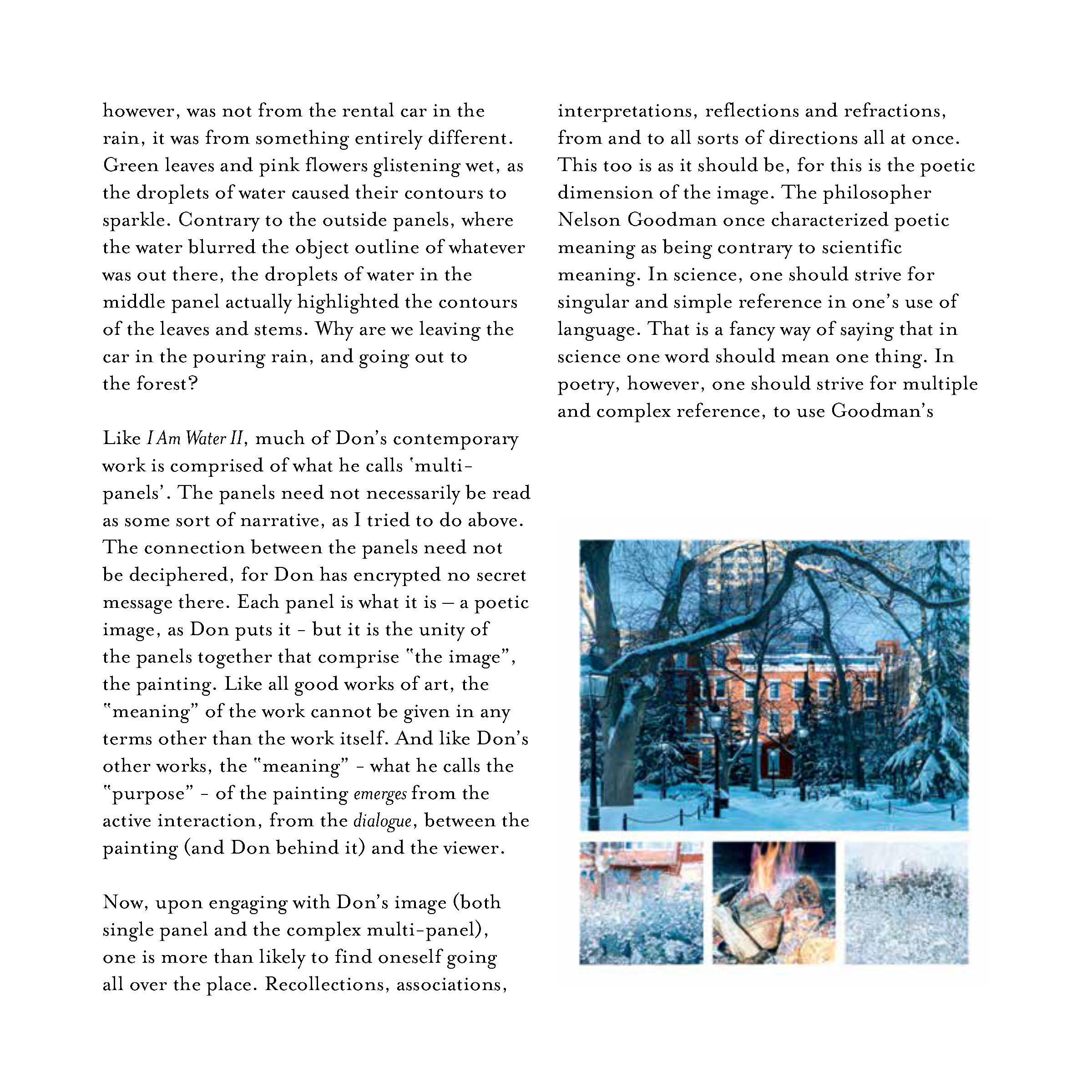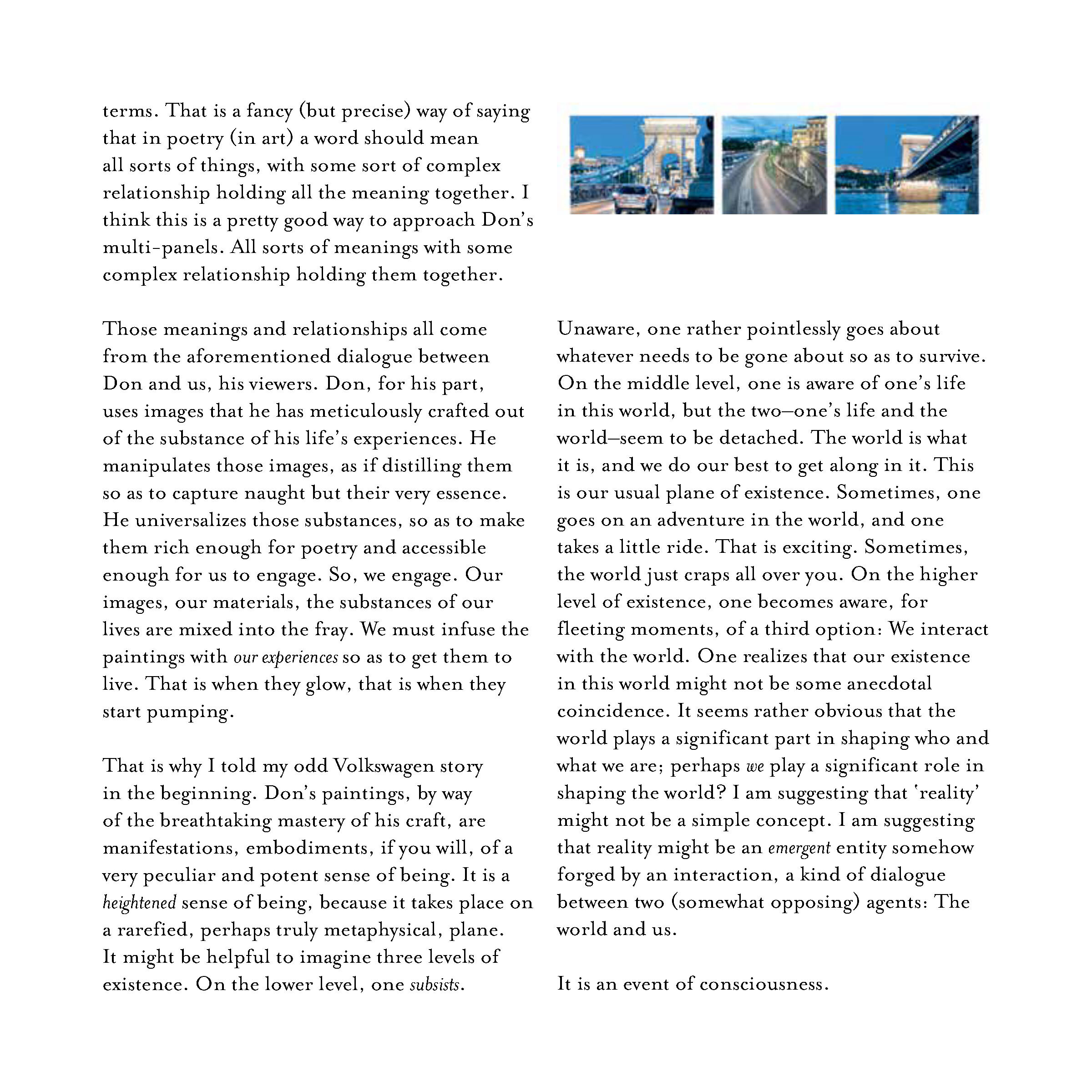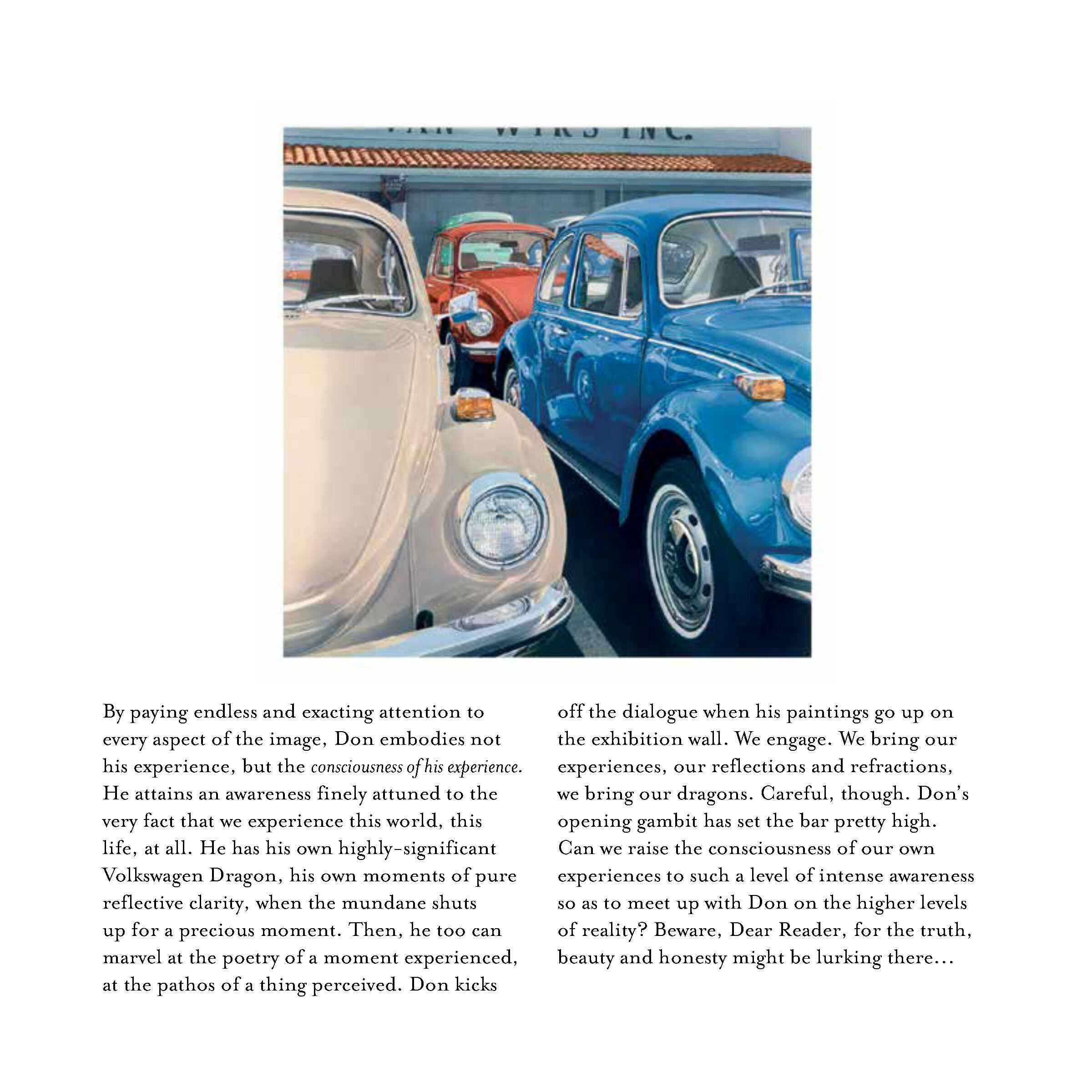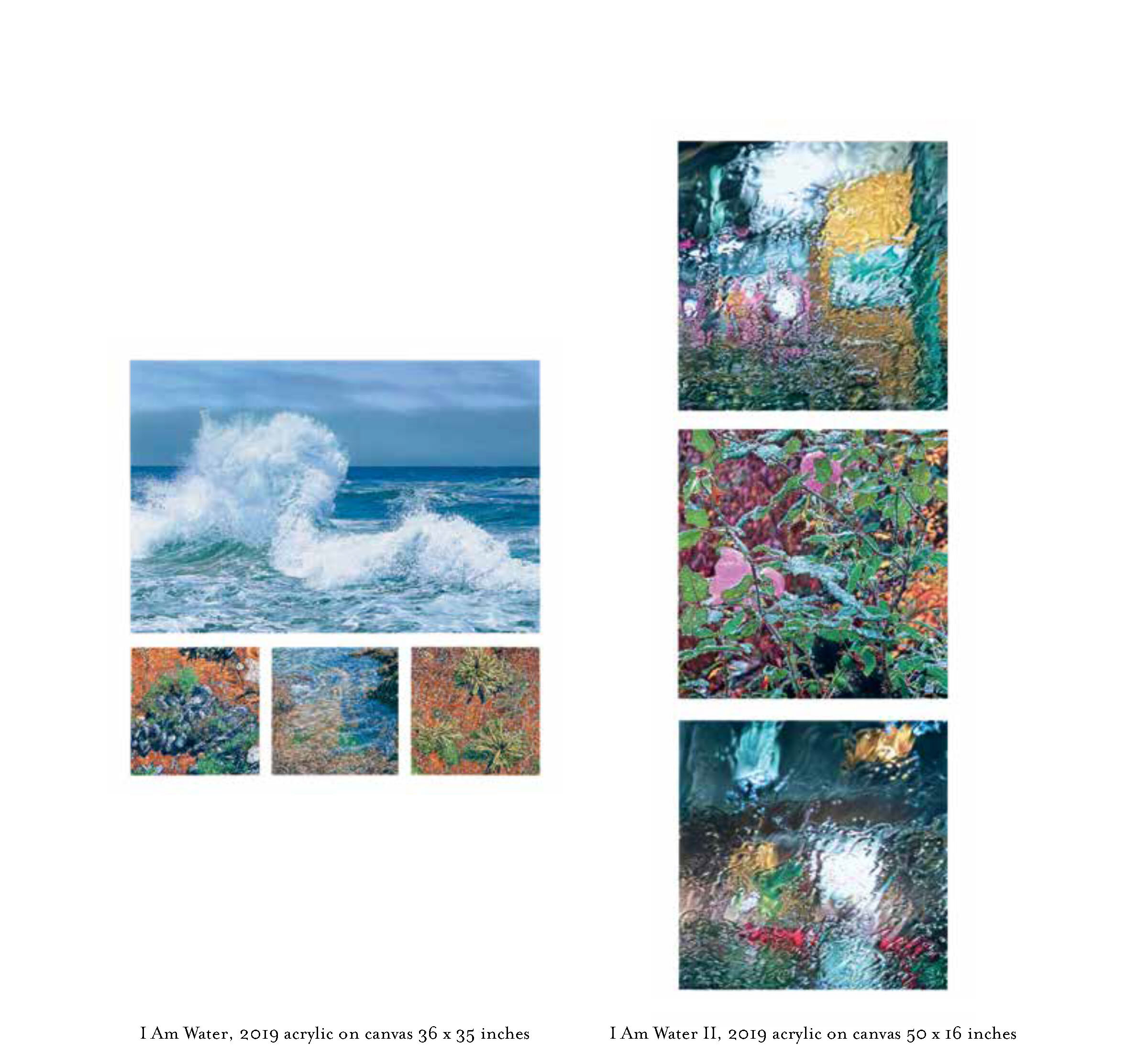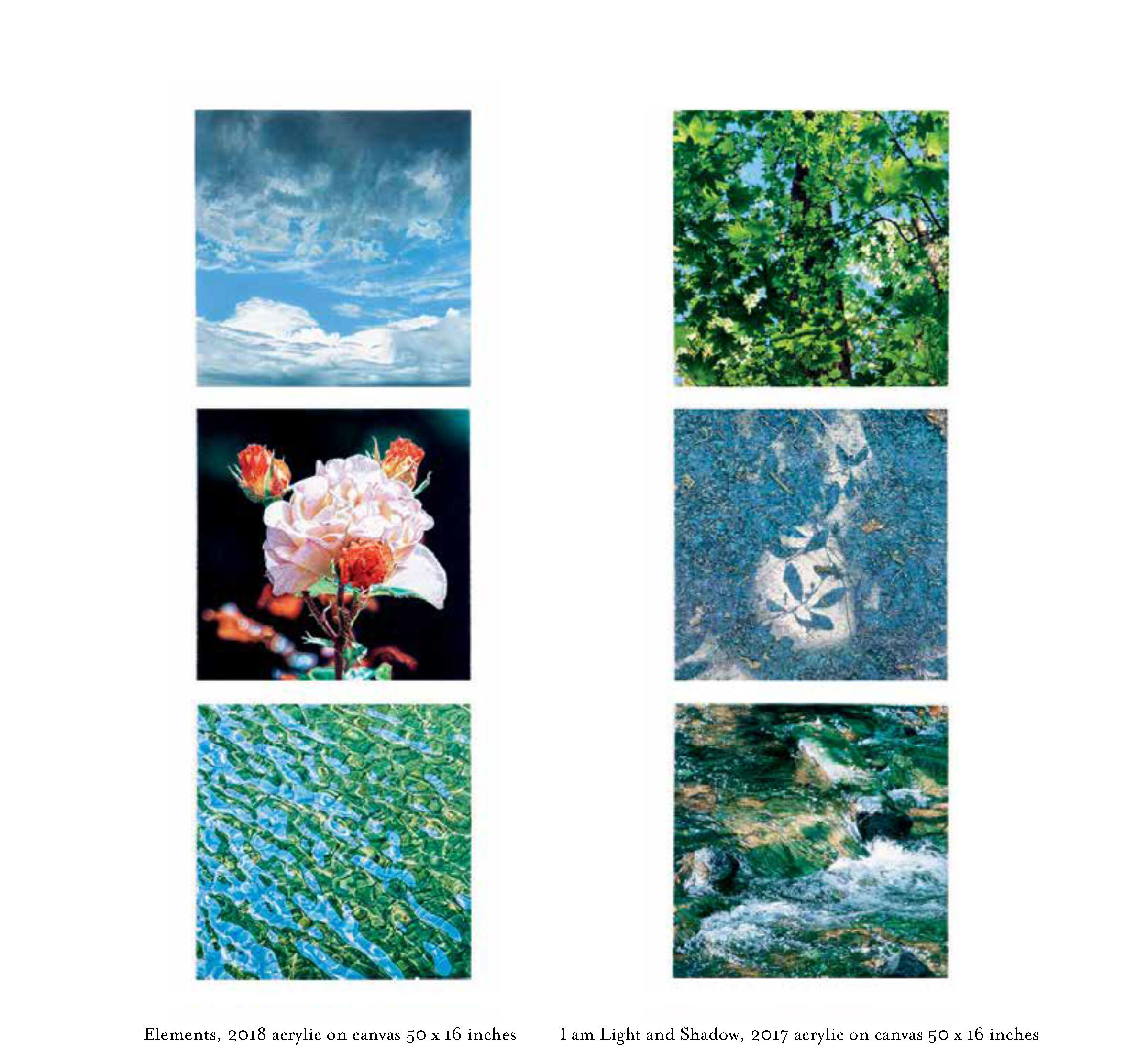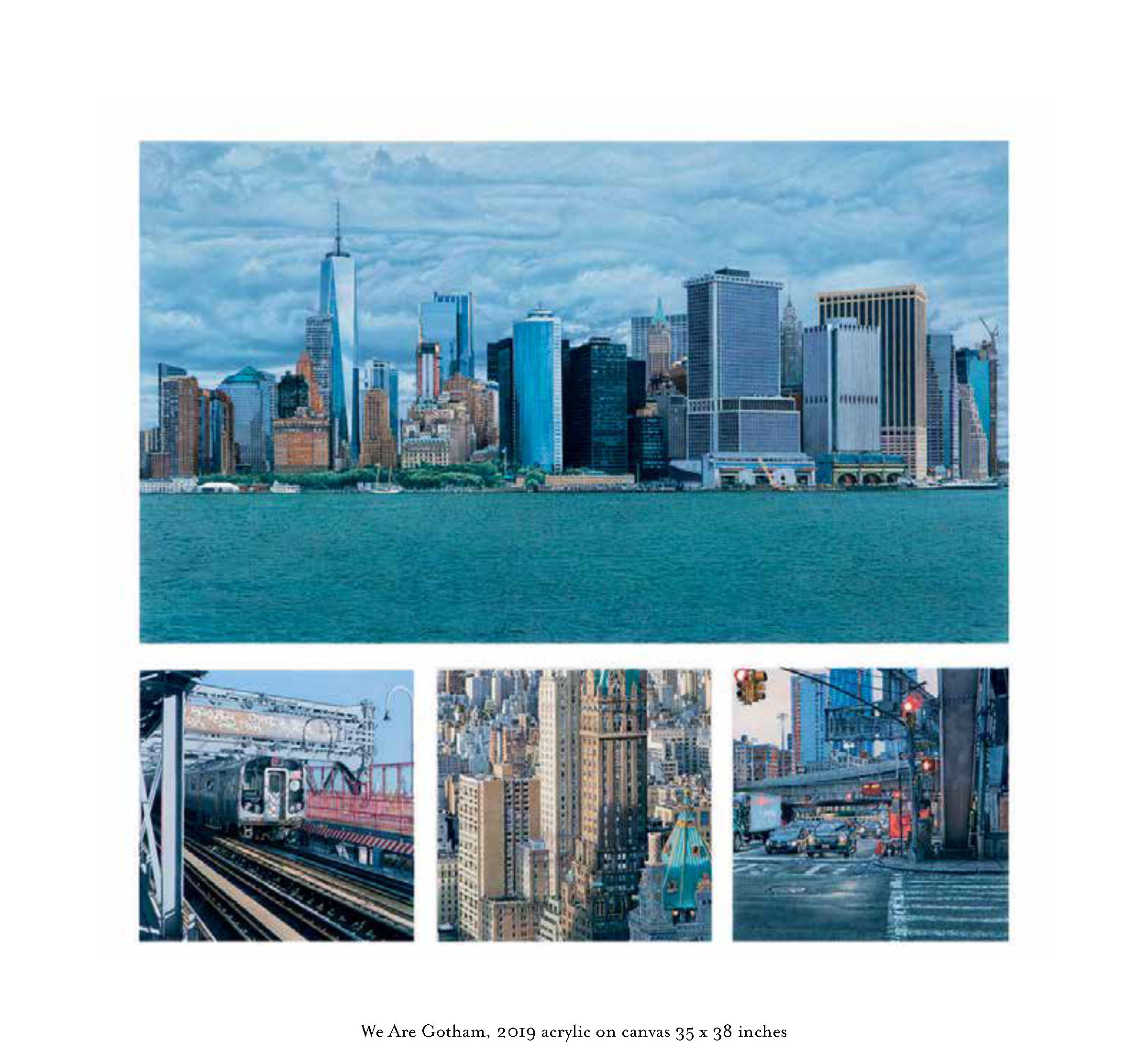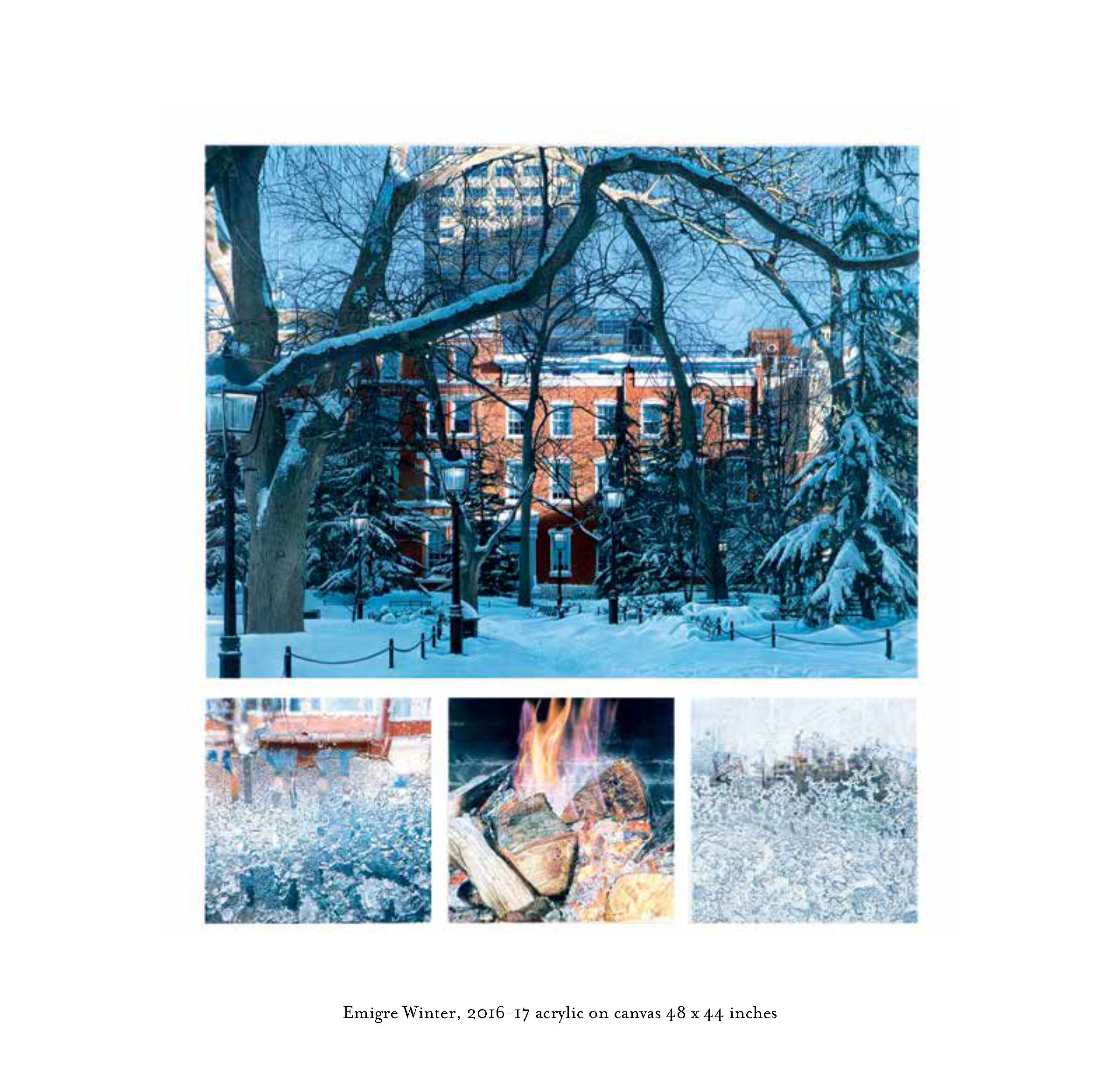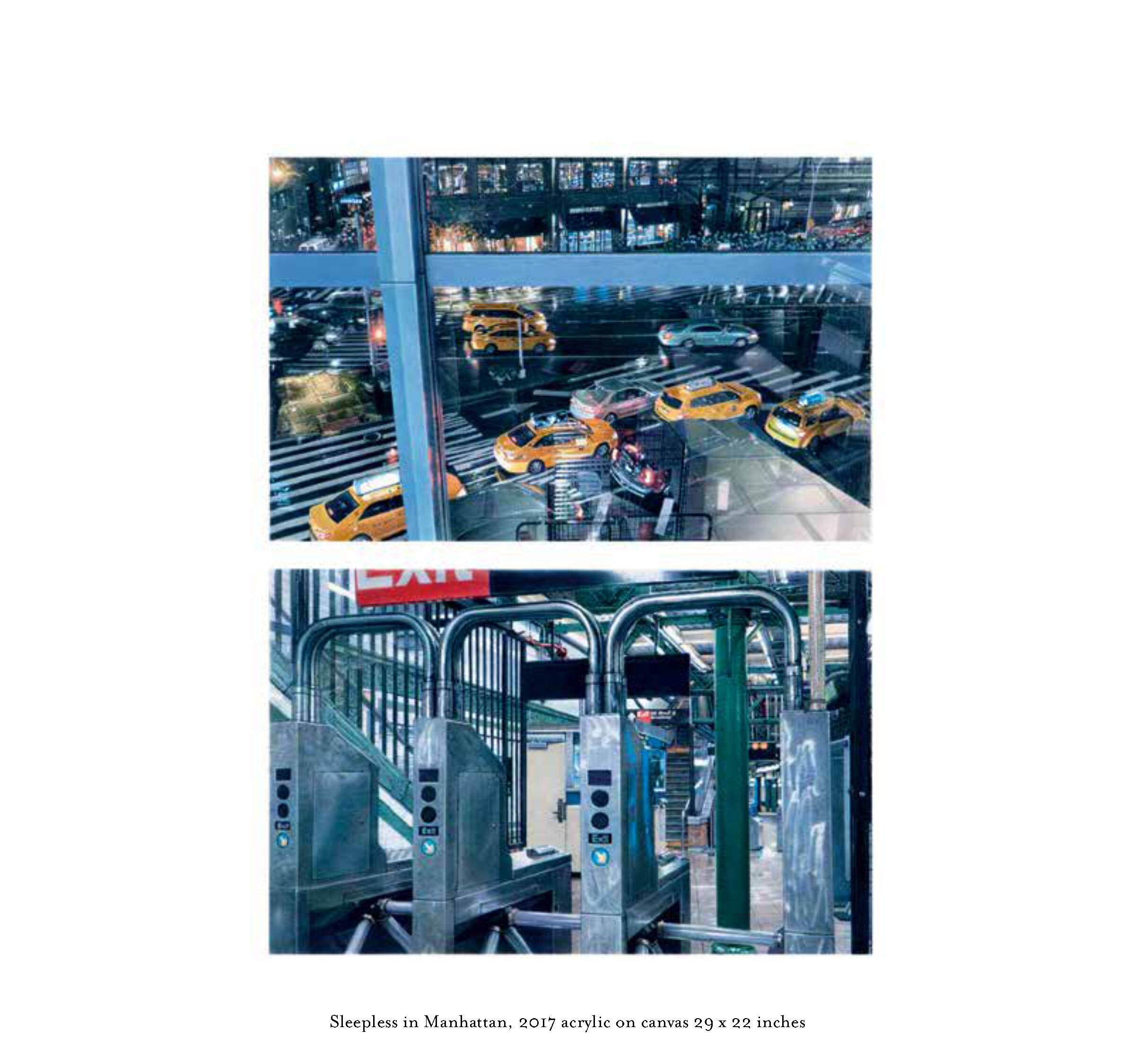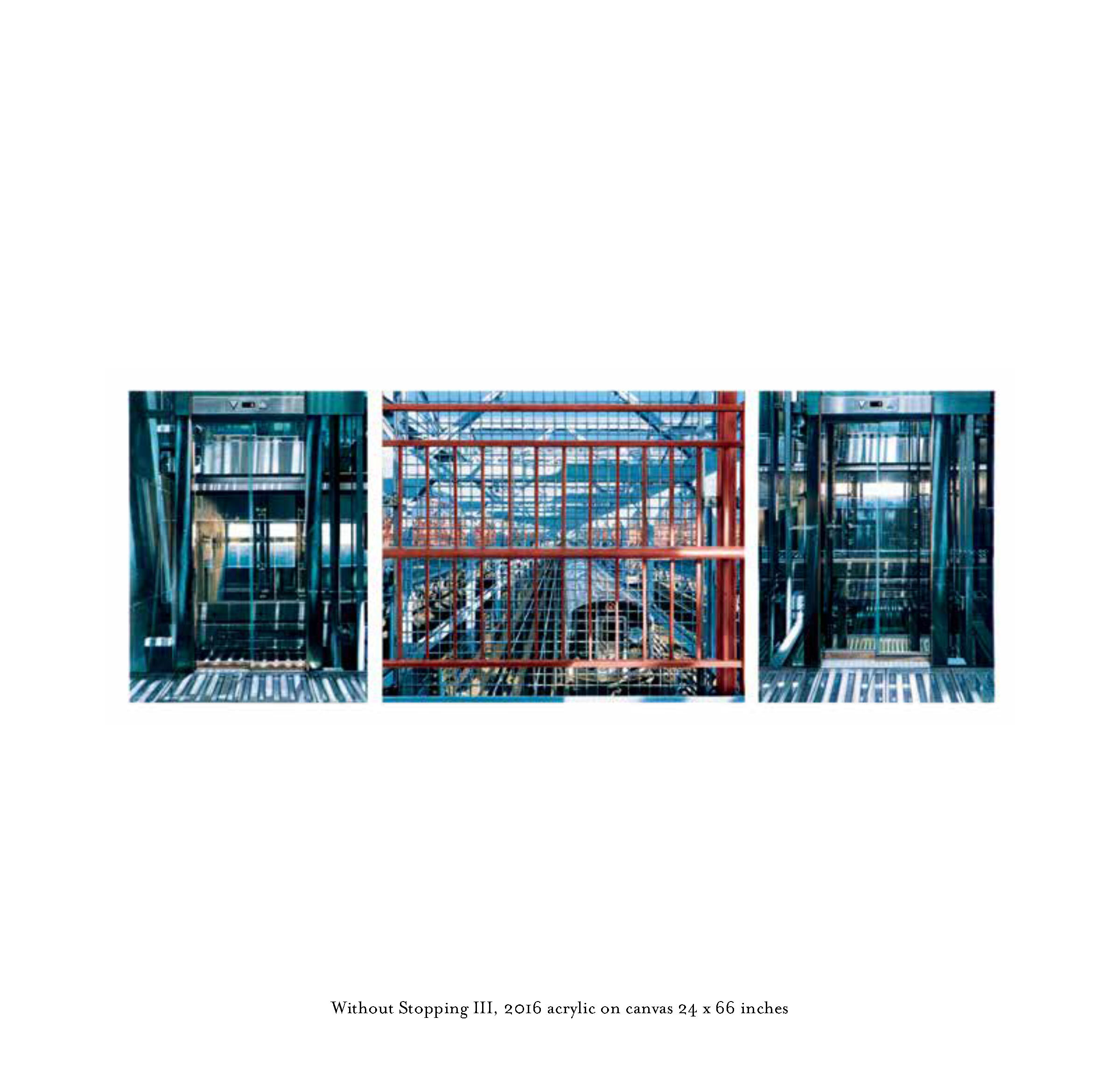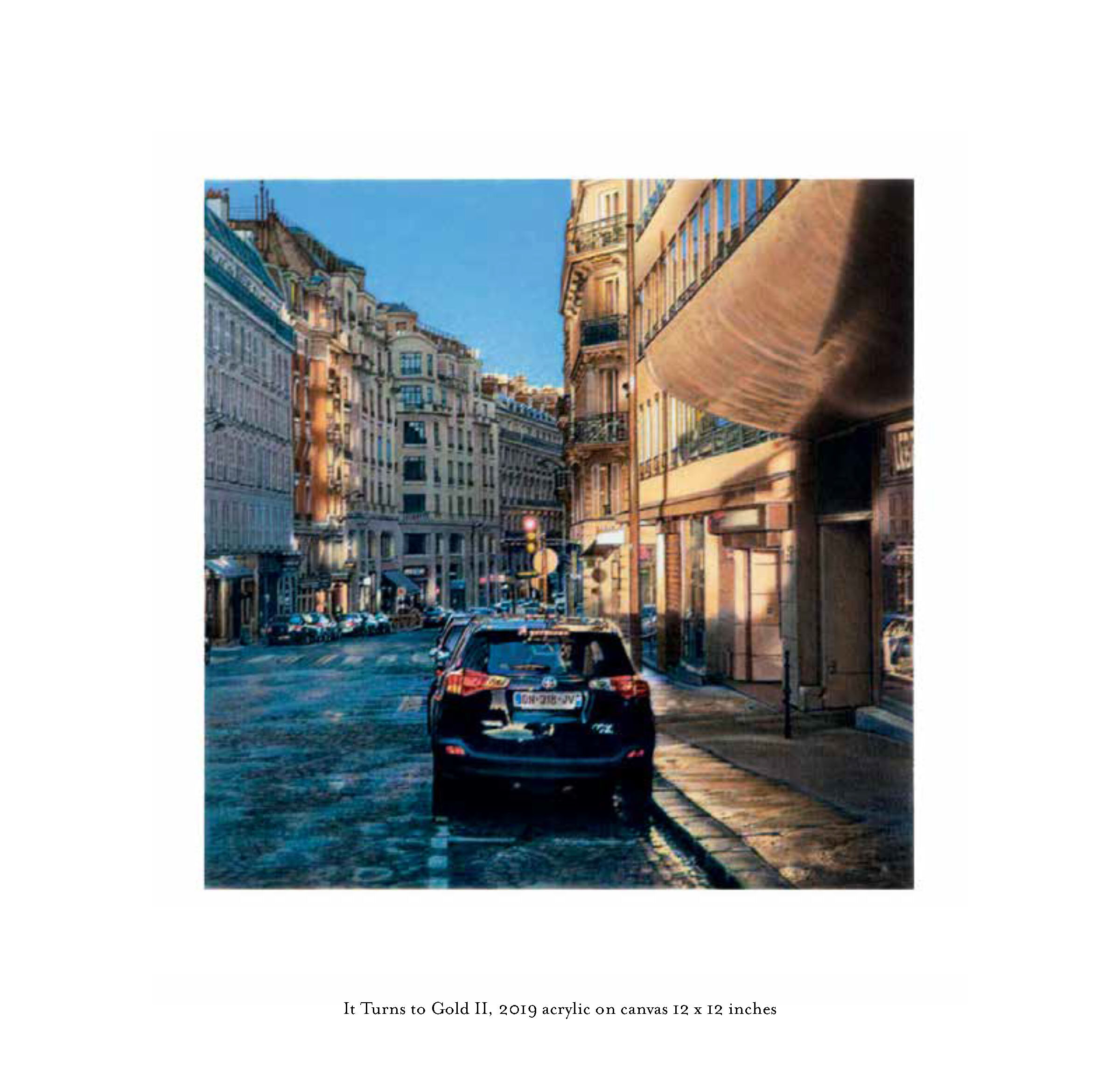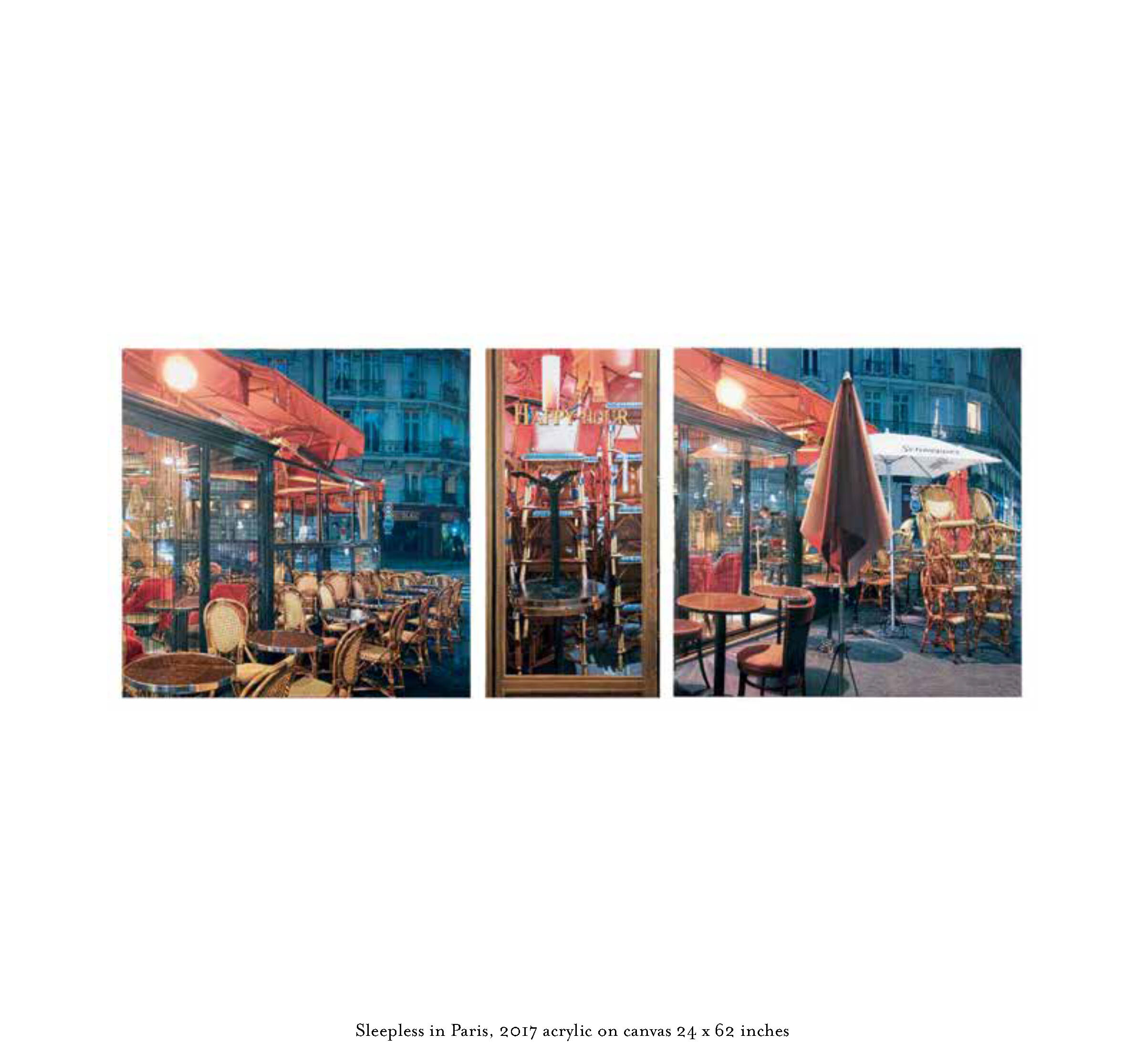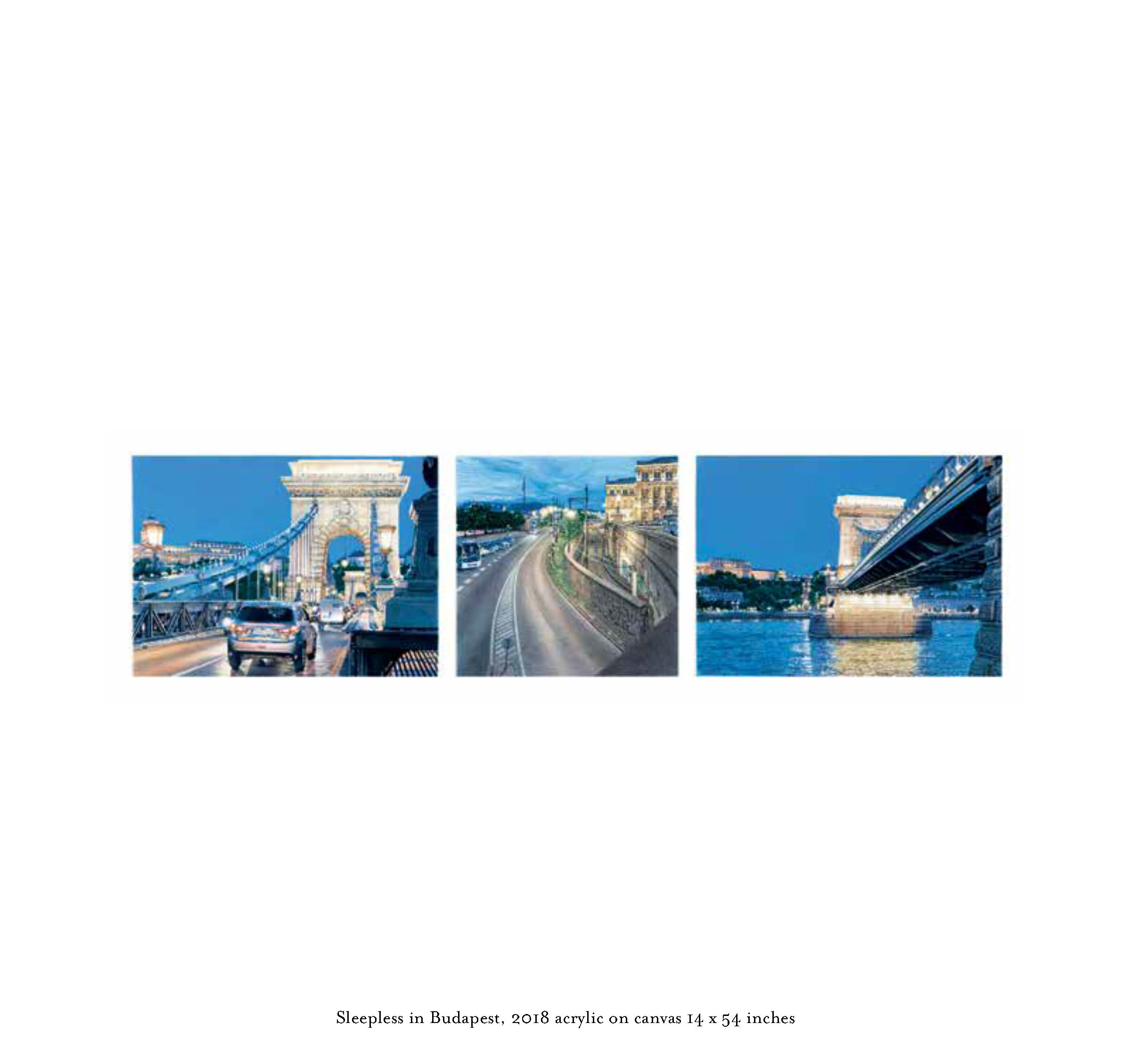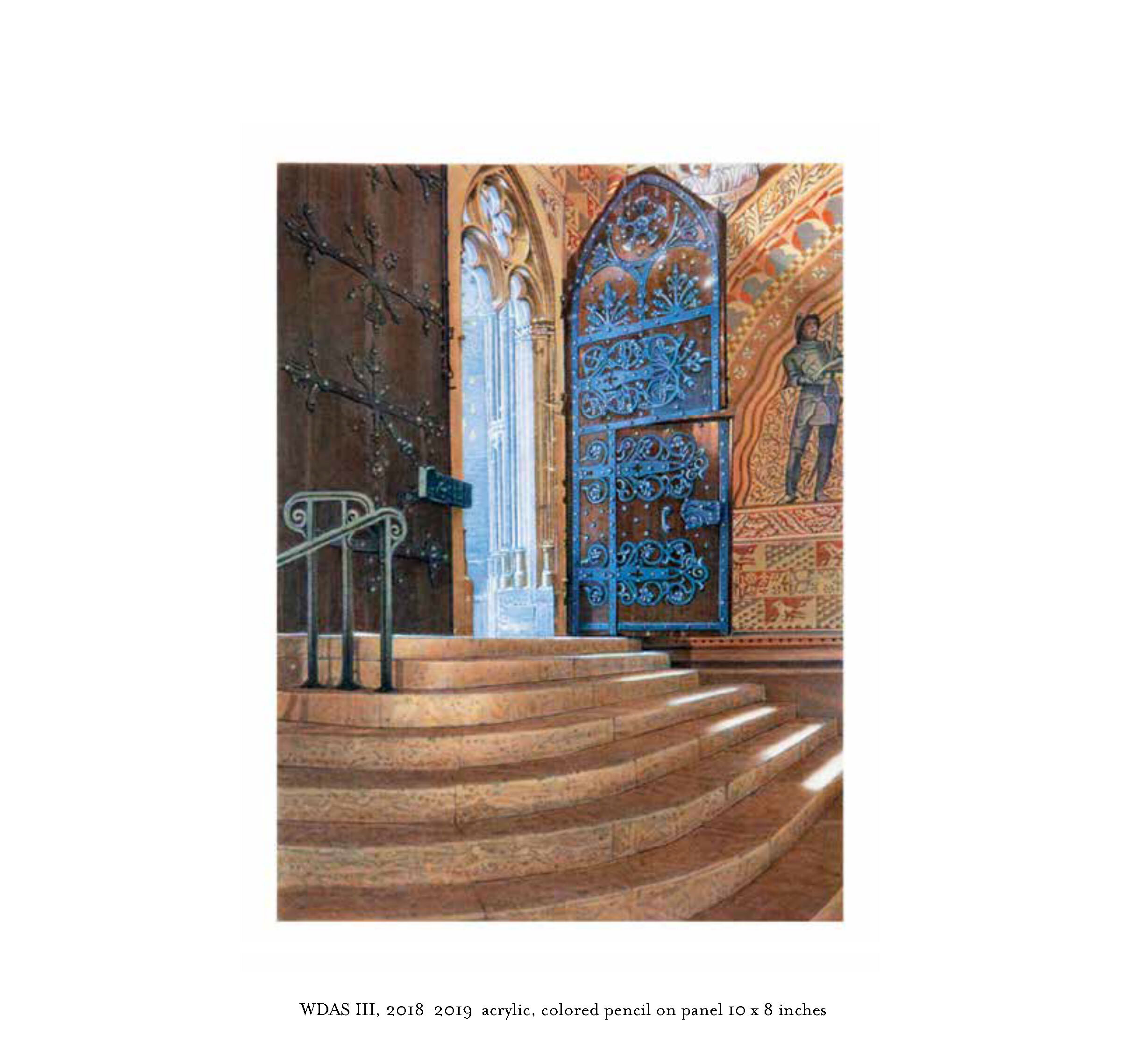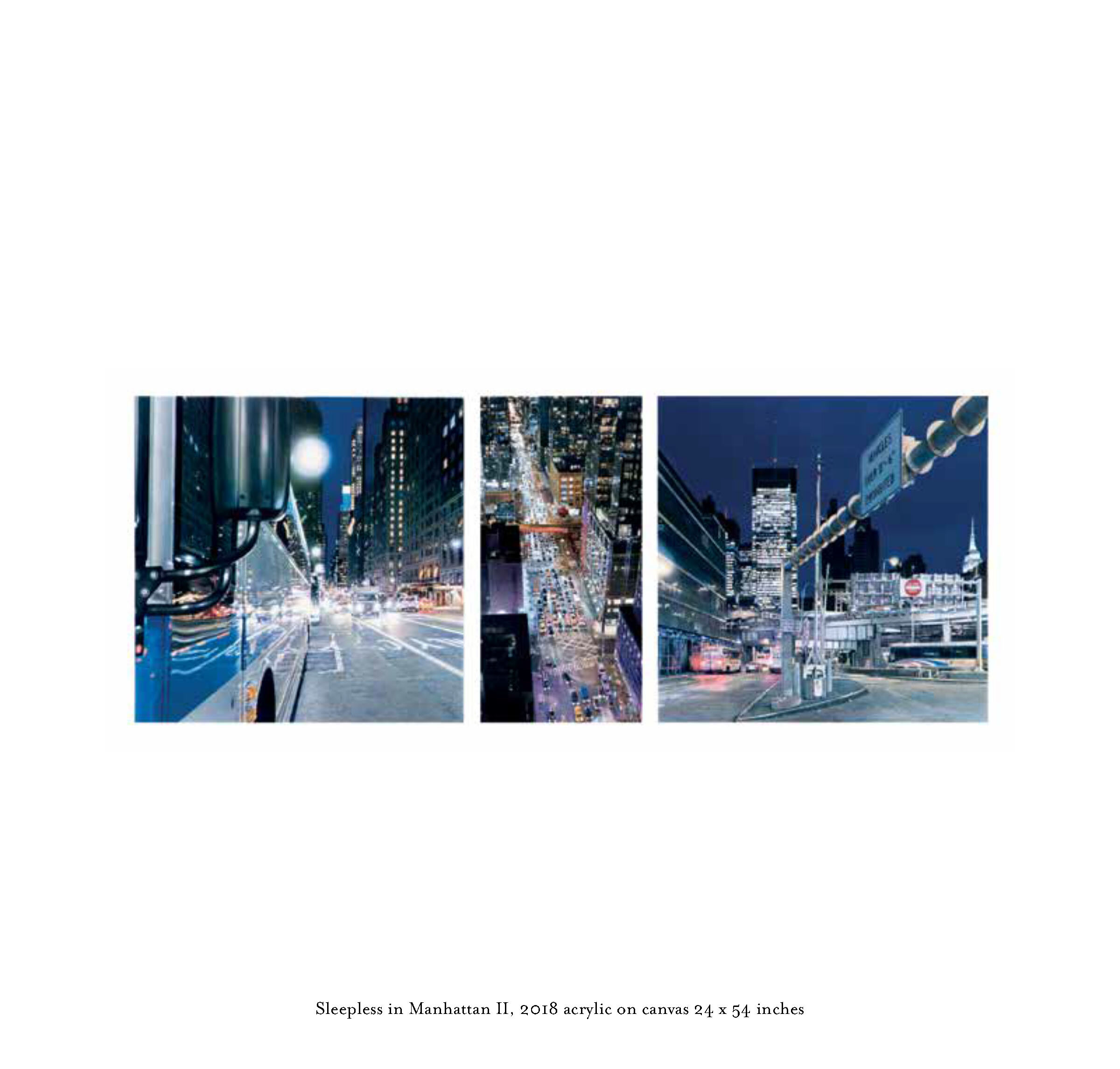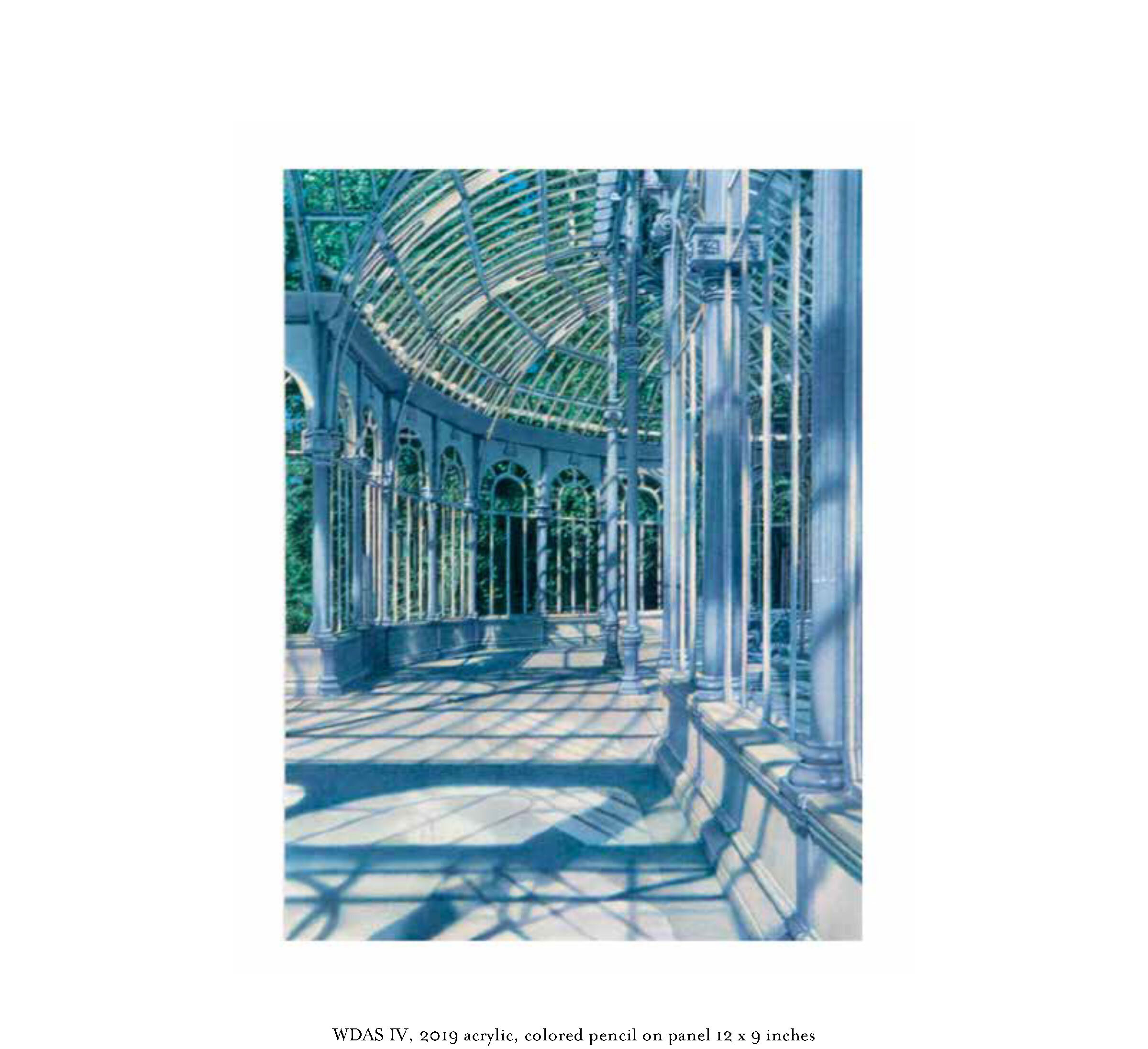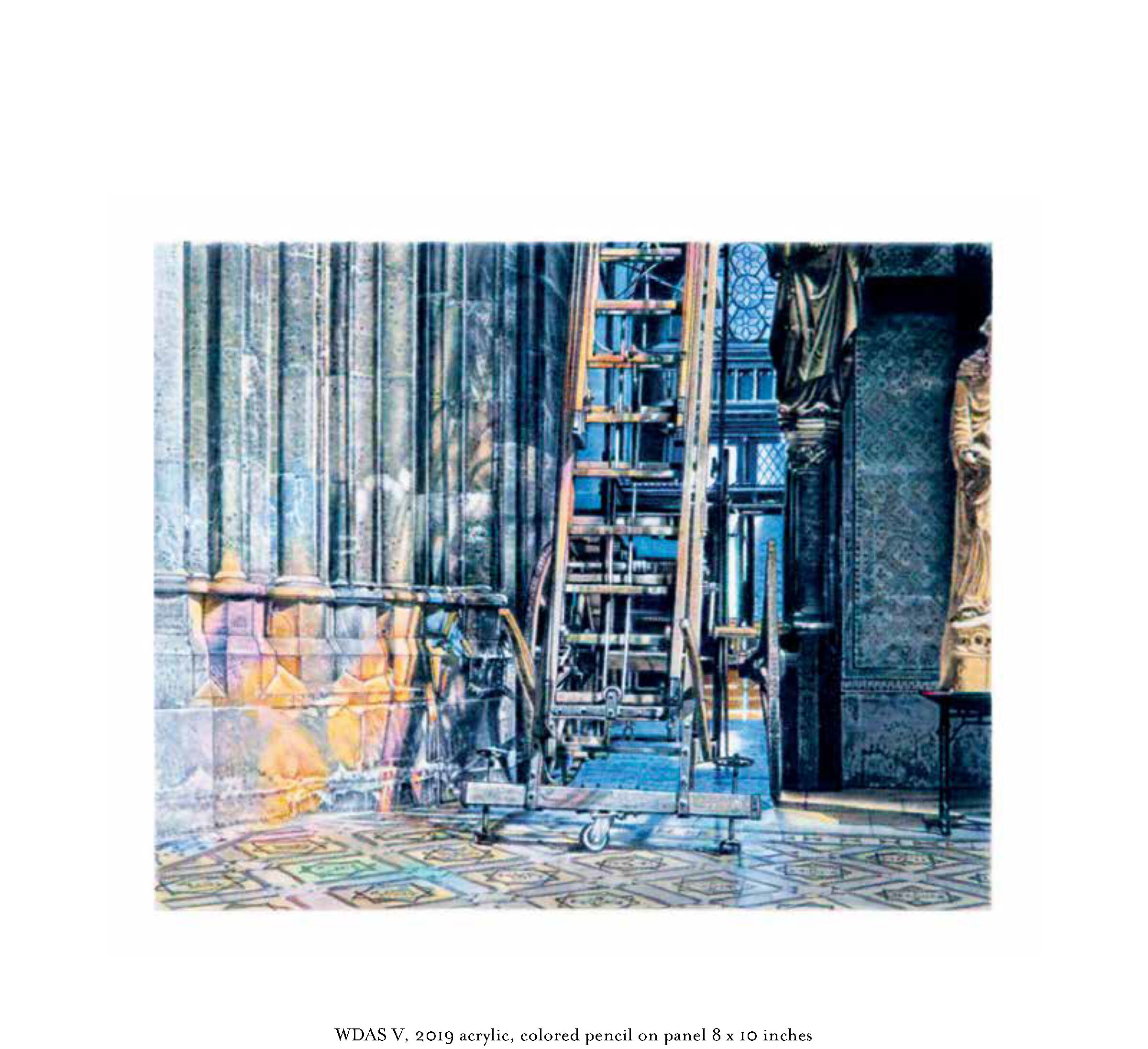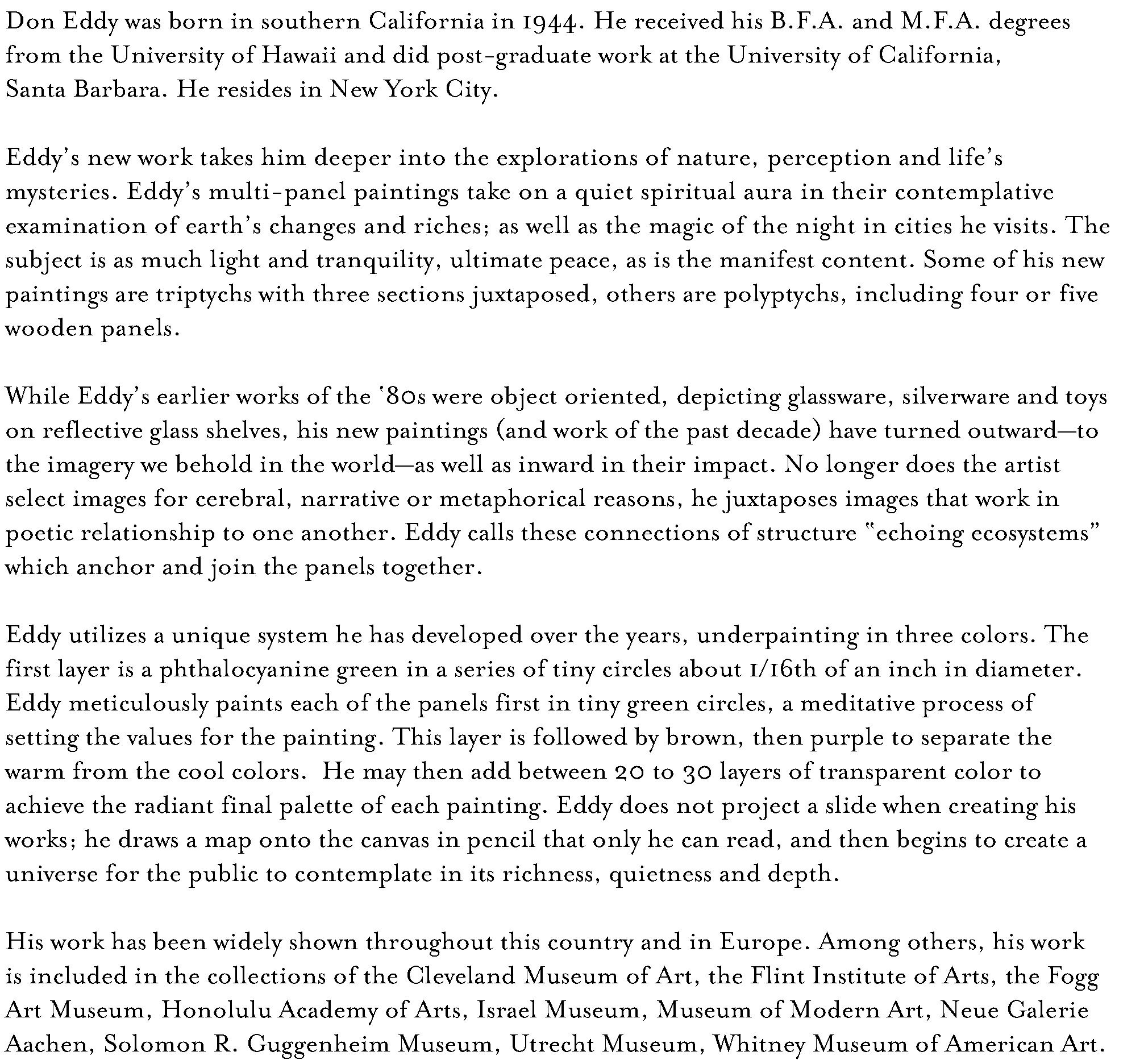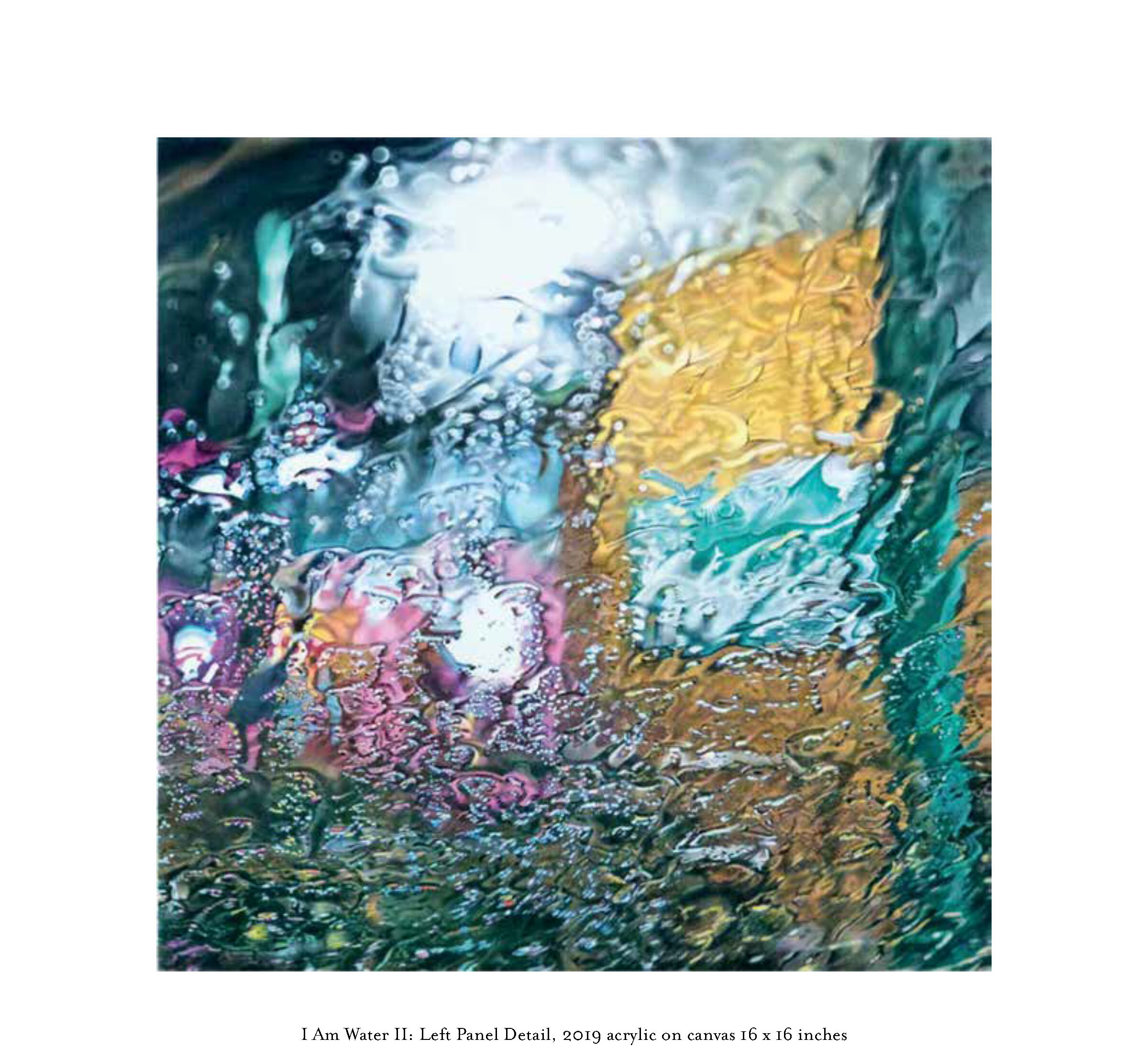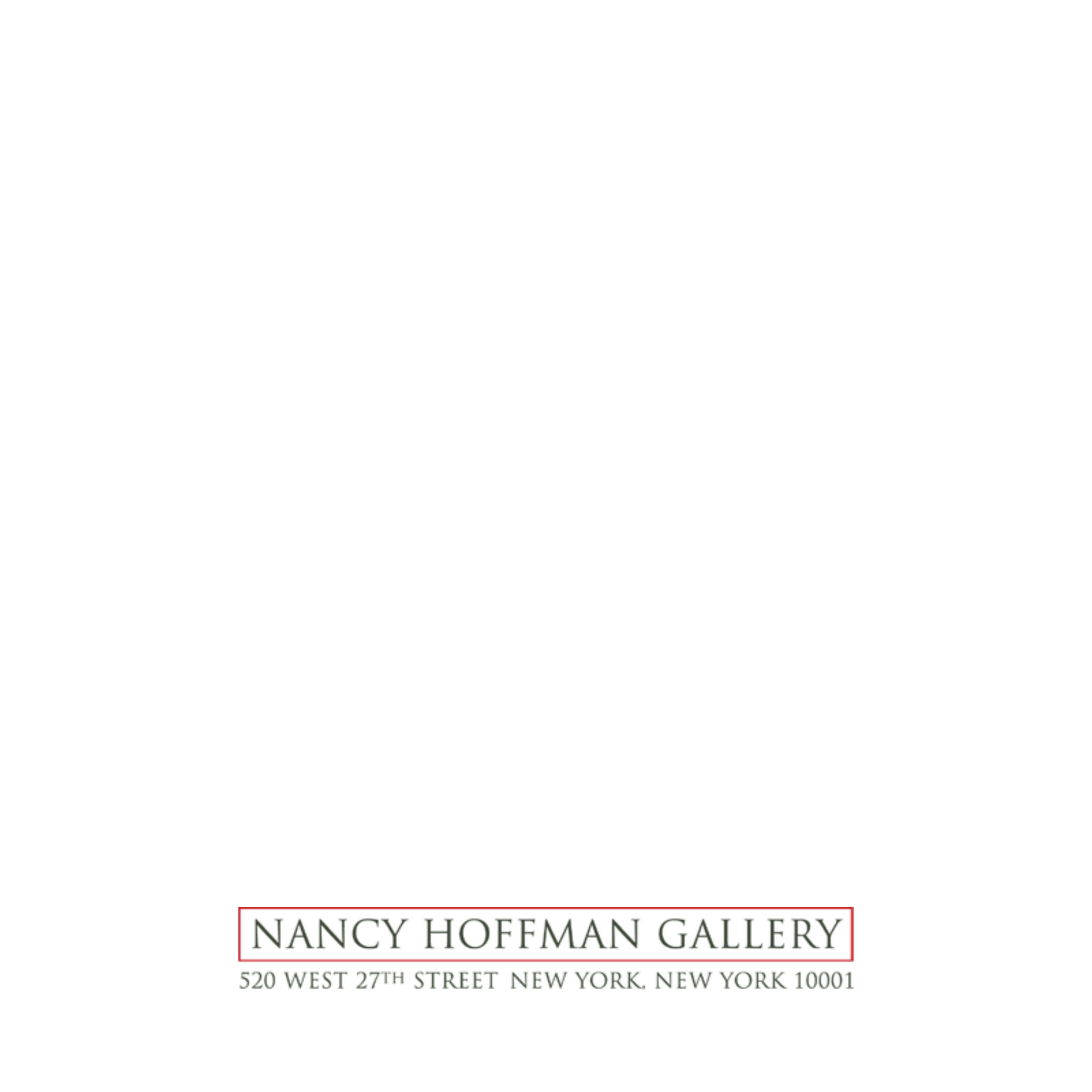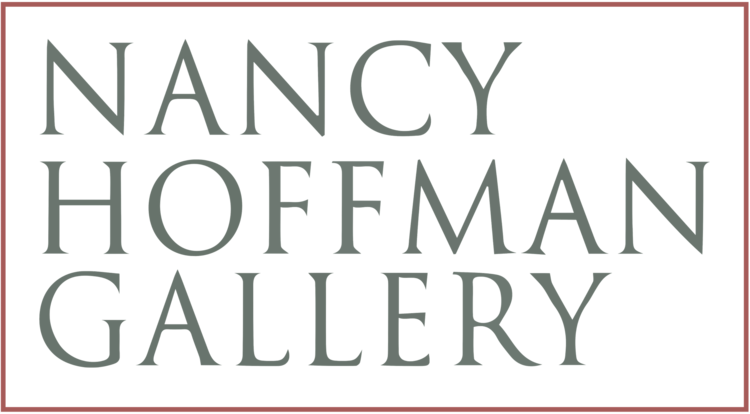Don Eddy
Don Eddy: A Virtual Tour of the exhibition with the artist
March 19 - September 4, 2020
DON EDDY AT NANCY HOFFMAN GALLERY, MARCH 19 — June 30, 2020
On March 19 an exhibition of new work by Don Eddy opens at Nancy Hoffman Gallery and continues through April 30. Eddy is one of the few early Photorealist painters who has taken his vision into new terrain, and has expanded his unique painting process. In the ‘70s Eddy painted the California urban landscape, focusing on cars, reflections on cars, bumpers, headlights. The subject came naturally to the son of a car body and fender shop father. The artist moved quickly from cars to storefronts to shelves filled with glassware and toys.
Eddy’s work of the past four years takes him deeper into the exploration of nature, perception and life’s mysteries. His multi-panel paintings take on a quiet spiritual aura in their contemplative examination of earth’s riches; as well as the magic of the night in the cities he visits. The artist’s subject is as much light as is the manifest content; he paints, as catalogue author David C. Graves writes, ”images that he has meticulously crafted out of the substance of his life’s experiences. He manipulates those images, as if distilling them so as to capture naught but their very essence. He universalizes those substances, so as to make them rich enough for poetry and accessible enough for us to engage.” Some of his new paintings are triptychs with three sections, others are polyptychs with four or five wooden panels. For the past several years Eddy has returned to the urban landscape, this time New York; as well as his experiences in nature, celebrating light and season in the energy of the ocean, a mountain at sunset, a lotus in full bloom.
Painted in 20-30 layers of transparent acrylic over an under painting of three colors (the first being circles about a 20th of an inch in diameter of phthalocyanine green, the second being burnt sienna and the third dioxazine purple). With these three colors he separates warm from cool colors, and then begins to add many layers of transparent color to achieve the final palette of each work.
Eddy writes of his use of multi-panels:
“From 1990, a distinguishing feature of my work has been the format of the work itself. A single painting is made up of two or more panels. There are diptychs, triptychs, and even polyptychs. Freely derived from Medieval altarpieces, the whole is a product of several images. When introduced, this work was greeted with a mixture of puzzlement and resistance. Over time, I sensed a grudging acceptance of the format even though it was not fully understood. But the questions persisted: Why was it necessary? What function did it perform? and What did it mean? Though unusual in contemporary representational art, there is much to recommend a multi- paneled format. I could write a small book on the many advantages of deploying this format, but I will limit myself to a discussion of one issue: the tension between perception and experience. To address this issue I will introduce you to "the problem of the corn plant”.
“On Easter Sunday, maybe 35 years ago, I was given the gift of a tiny house plant, commonly known as a corn plant. A simple present of no particular interest to me, I probably accepted it with poorly disguised contempt. Over time, though, I developed a fondness for the plant and took care to nurture it. In due course it grew from a wee thing into something approaching a small tree (about 190cm). Today, having traveled with it from place to place it sits majestically in my front window.
“If you were to visit me, sooner or later, it would likely attract your attention. What you would see would not seem all that special, just a fairly large house plant that is clearly thriving. I, on the other hand, would see 35 years of my life. Standing in front of that humble plant I would see my daughter, growing from a small child to a successful adult. I would see a marriage dissolve, and, in time, a new and permanent love take its place. I would see the winding road of a career in art, the ups and downs, the slow maturation of the work. Simply put, you would perceive the plant. I would experience, in that plant, the flow of my life. But not really. Even you, with no prior experience of this particular plant, would not so much "see" the plant as experience it through the veil of your hopes, preferences, prejudices, and history.
"The problem of the corn plant" is: How does one deal with the richness of experience as it is embodied in simple "things"? And how does one communicate that in the context of art? This creates a special difficultly for representation art. It illuminates a substantial weakness when depicting "things" on a single paneled work of art. If I were to, let's say, paint that corn plant, how would I imbue it with the depth and richness of my experience? I would contend that it cannot be done in the context of a single paneled representational painting. You can affect mood, emotion, and psychology, but not experience. You could attempt to deal with the problem by including many images on a single panel, but that inevitably invokes the burdensome specter of Surrealism with its attendant psychological issues.
“After years of struggle and resistance, it occurred to me that the solution was to adopt the format of multi-paneled paintings. The inevitable subject of a multi-paneled painting is not "things" but "relationships." In such a work, a conversation is generated among images that is more like our experience than our perception. It is not necessarily a didactic conversation with a preconceived meaning. Rather, meaning is generated in the context of a dynamic encounter among the multiple images and the observer. Existentially, no meaning preexists the dialogue. As in our life, meaning is generated, in time, and in active encounters with people, places, and things. Our personal narratives, our personal histories are our narratives and histories only in retrospect. In the present, we have dynamic encounters in time that generate our experience and meaning. That is what my work hopes to do.”
Don Eddy was born in Long Beach, California in 1944. He received a B.F.A. in 1967 and an M.F.A. in 1969 from the University of Hawaii. The artist attended the University of California, Santa Barbara, 1969-70, for post-graduate study.
Don Eddy’s work has been widely shown throughout this country at the Arkansas Arts Center, Little Rock; Bergstrom-Mahler Museum, Neenah, Wisconsin; Boca Raton Museum of Art, Florida; Boise Art Museum, Idaho; The Brooklyn Museum, New York; The Butler Institute of American Art, Youngstown, Ohio; Carnegie Institute, Pittsburgh; The Cathedral Church of Saint John the Divine; New York; Center for the Arts, Vero Beach, Florida; The Cleveland Museum of Art, Ohio; Columbus Museum of Art, Ohio; Contemporary Arts Center, New Orleans; The Contemporary Museum, Honolulu; Danforth Museum of Art, Framingham, Massachusetts, Duke University Museum of Art, Durham, North Carolina; Flint Institute of Arts, Michigan; Greenville County Museum of Art, South Carolina; Heckscher Museum, Huntington, New York; The Huntington Museum of Art, West Virginia; Indianapolis Museum of Art, Indiana; Mana Art Center, Jersey City, New Jersey; Museum of Art, Fort Lauderdale; The Museum of Modern Art, New York; Nassau County Museum of Art, Roslyn Harbor, New York; The Oakland Museum, California; Oklahoma Art Center, Oklahoma City; Oklahoma City Museum of Art, Oklahoma; Orlando Museum of Art, Florida; Palm Springs Art Museum, Palm Desert, California; Pennsylvania Academy of the Fine Arts, Philadelphia; The Philbrook Museum of Art, Tulsa, Oklahoma; Polk Museum of Art, Lakeland, Florida; San Antonio Museum of Art, Texas; San Francisco Museum of Modern Art, California; Tampa Museum of Art, Florida; Tucson Museum of Art, Arizona; Virginia
Beach Center for the Arts, Virginia; Virginia Museum of Fine Arts, Richmond; Whitney Museum of America Art, New York; Wichita Art Museum, Kansas; Jane Voorhees Zimmerli Art Museum at Rutgers, University, New Brunswick, New Jersey; among others, and abroad at Aarhus Kunst Museum, Denmark; Australia National Gallery, Canberra; Birmingham Museum and Art Gallery, United Kingdom; Gl. Holtegaards, Copenhagen; Centro Mostre, Rome; Deutsche Guggenheim, Berlin; The Gulbenkian Museum, Lisbon; in Japan at City Museum of Iwaki; Hokodate Museum of Art, Hokkaido; Kumamoto Prefectural Museum of Art; and Prefectural Museum of Iwate; Kunstverein, Hannover; Kunsthalle, Nuremberg; Musée de Strasbourg: Musée d’Art Moderne et Contemporain, Strasbourg, France; Musée d’Ixelle, Belgium; El Museo del Arte Thyssen-Bornemisza, Madrid, Spain; Museu Europeu d’Art Modern, Barcelona, Spain; National Museum in Gdansk, Poland; and Salas de Exposiciones de Bellas Artes, Madrid.
The artist’s work is represented in the collections of Akron Art Museum, Ohio; Boise Art Museum, Idaho; The Butler Institute of American Art, Youngstown, Ohio; The Cleveland Museum of Art, Ohio; The Contemporary Museum, Honolulu; Danforth Museum of Art, Framingham, Massachusetts; Evansville Museum of Arts, History & Science, Indiana; Flint Institute of Arts, Michigan; Fogg Art Museum, Harvard University, Cambridge, Massachusetts; Fort Wayne Museum of Art, Indiana; Galleries of the Claremont Colleges, California; Haggin Museum, Stockton, California; Hofstra University Museum, Hempstead, New York; Honolulu Academy of Arts, Hawaii; The Metropolitan Museum of Art, New York; Mississippi Museum of Art, Jackson; The Museum of Modern Art, New York; Oklahoma City Museum of Art, Oklahoma; Rhode Island School of Design Museum of Art, Providence; Saint Louis Art Museum, Missouri; San Antonio Museum of Art, Texas; Santa Barbara Museum of Art, California; Sheldon Museum of Art, University of Nebraska, Lincoln; Solomon R. Guggenheim Museum, New York; Speed Art Museum, Louisville, Kentucky; Springfield Art Museum, Missouri; Storm King Art Center, Mountainville, New York; The Toledo Museum of Art, Ohio; U.S. Embassy Jakarta, Art in Embassies Program, U.S. Department of State; University Museum of Contemporary Art, University of Massachusetts, Amherst; Whitney Museum of American Art, New York; Williams College Museum of Art, Williamstown, Massachusetts; among others, and in collections abroad: Israel Museum, Jerusalem; Musee D’Art Moderne de Saint-Etienne Metropole, St. Etienne, France; Museo de Arte Moderno, Bogota, Colombia; Museu Europeu d’Art Modern, Barcelona, Spain; Neue Galerie, Aachen, Germany; Utrecht Museum, The Netherlands.
Don Eddy resides in New York.
For further information and/or photographs please call 212-966-6676 or e-mail Nancy Hoffman Gallery at info@nancyhoffmangallery.com.
Yours sincerely,
Nancy Hoffman

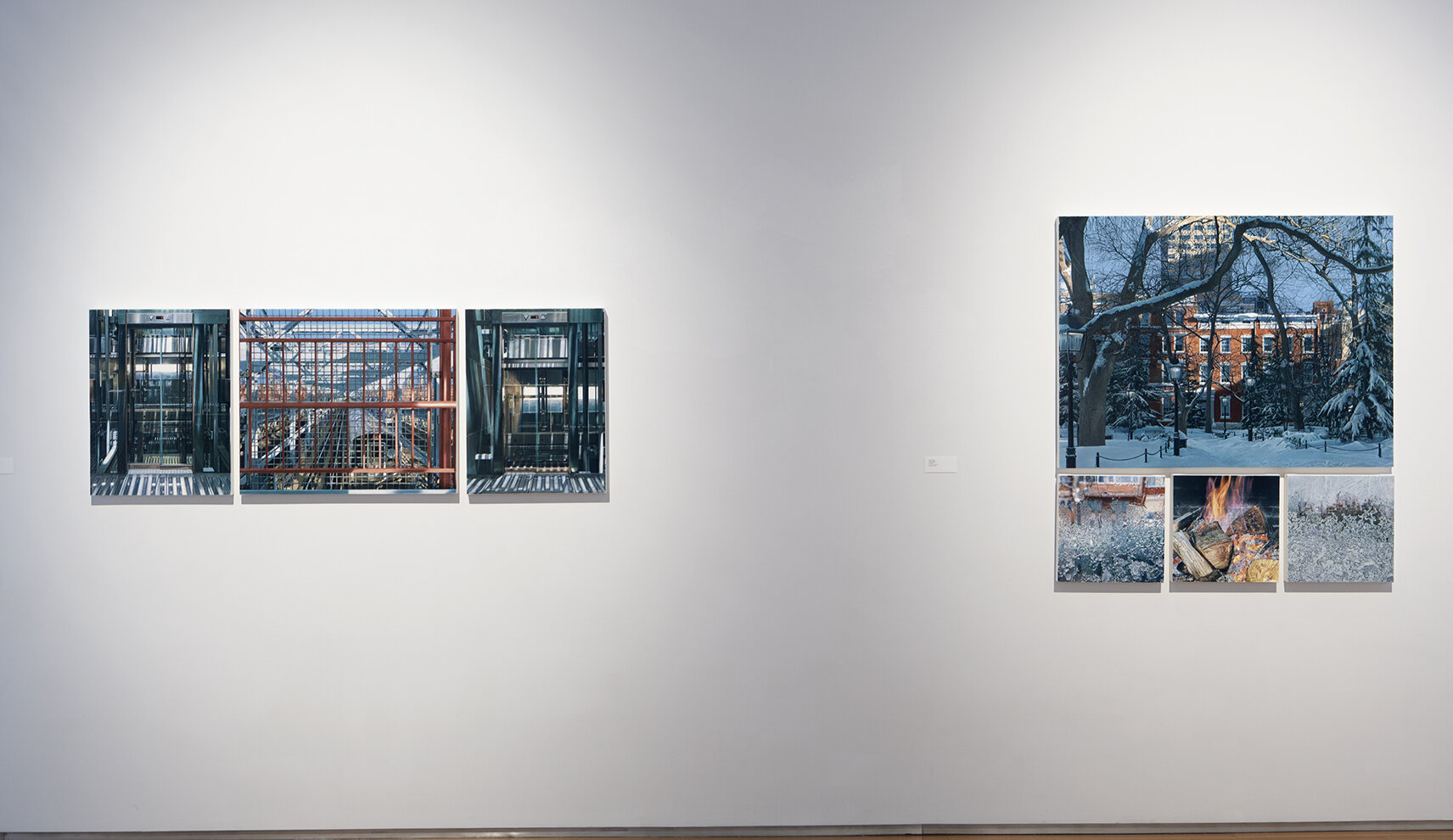
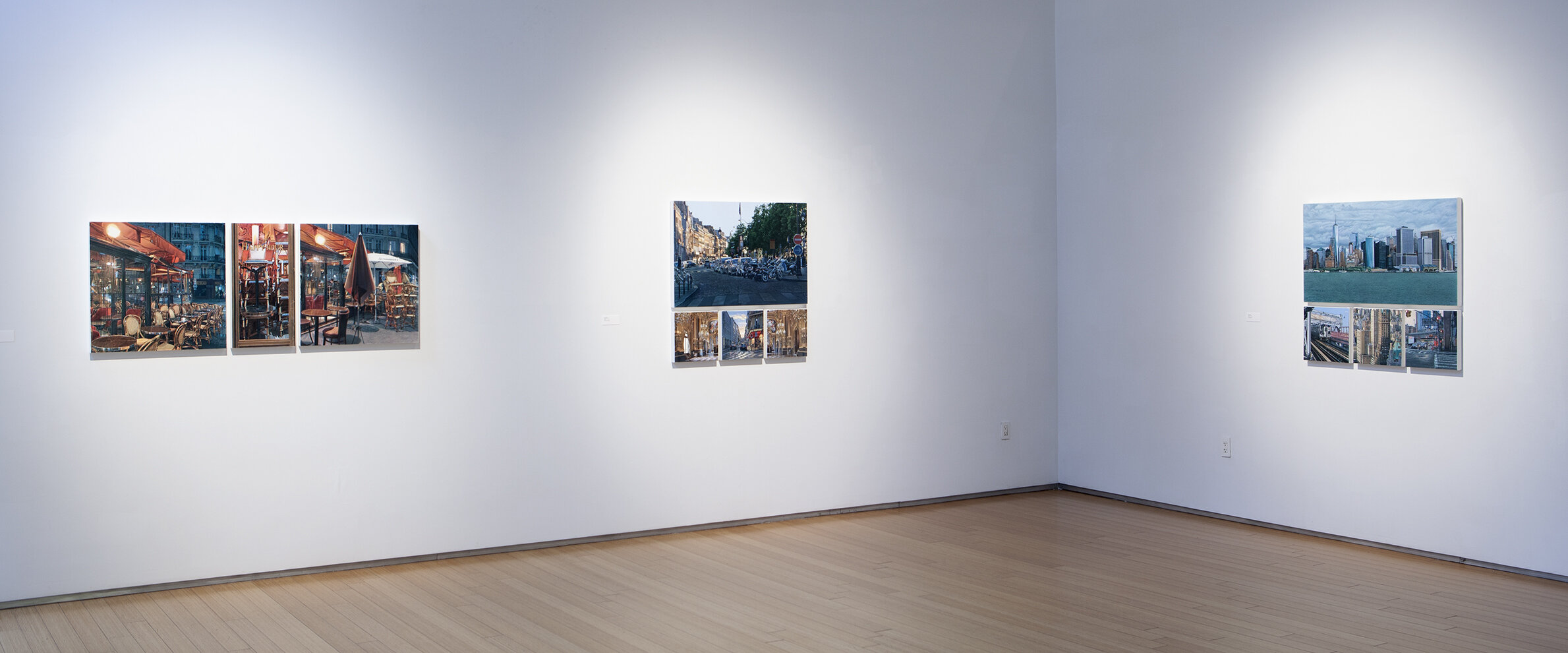

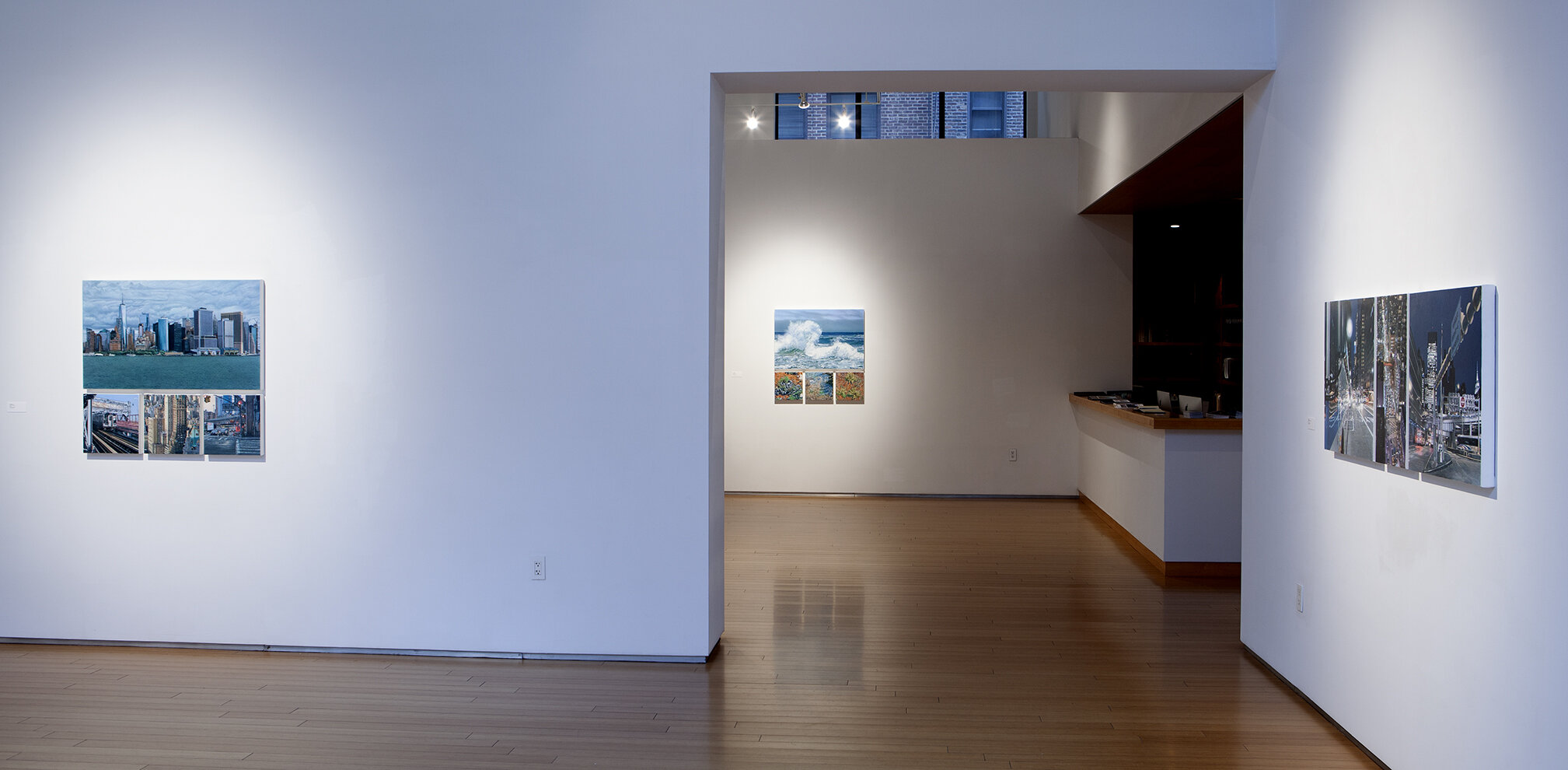

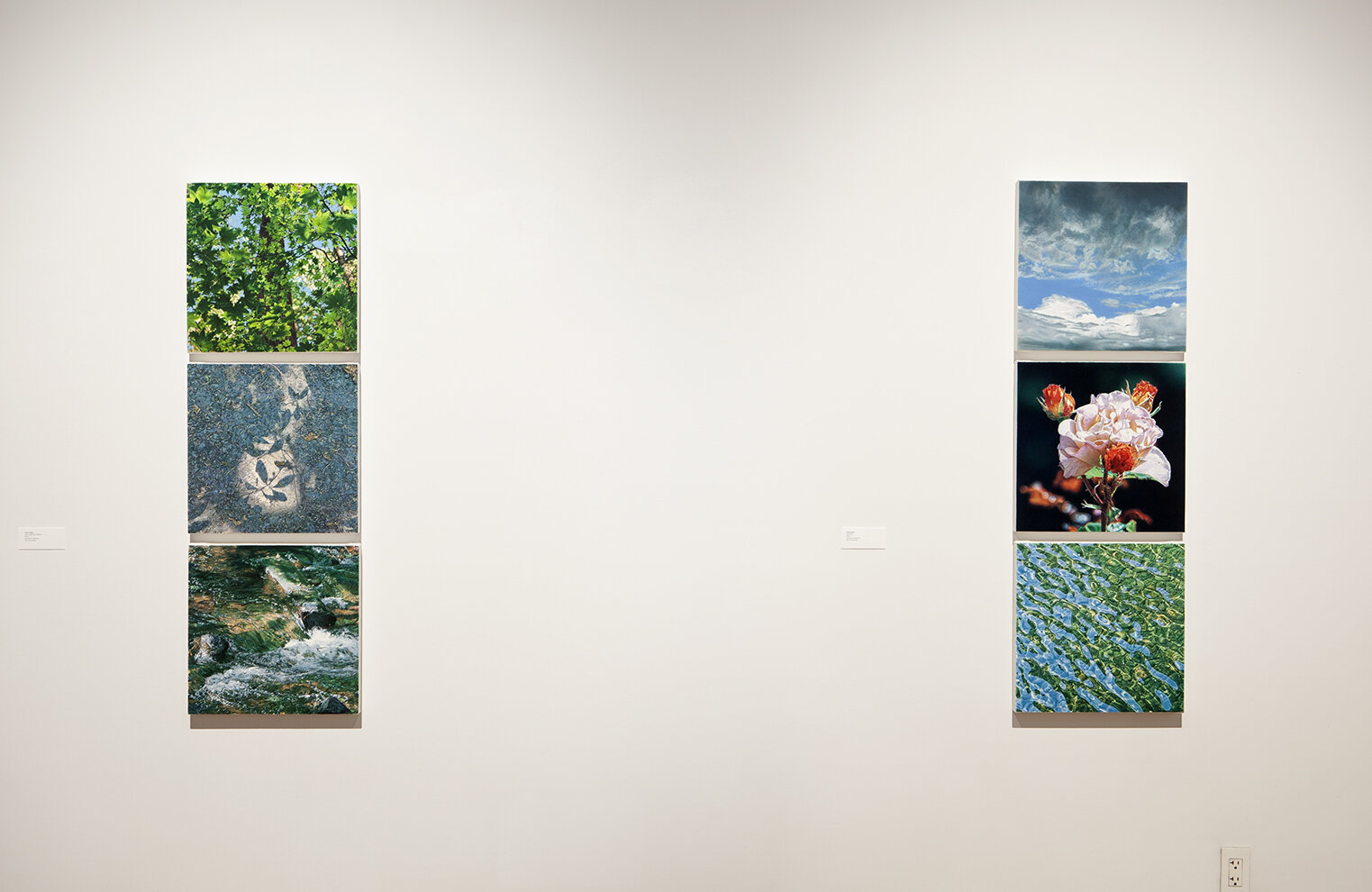

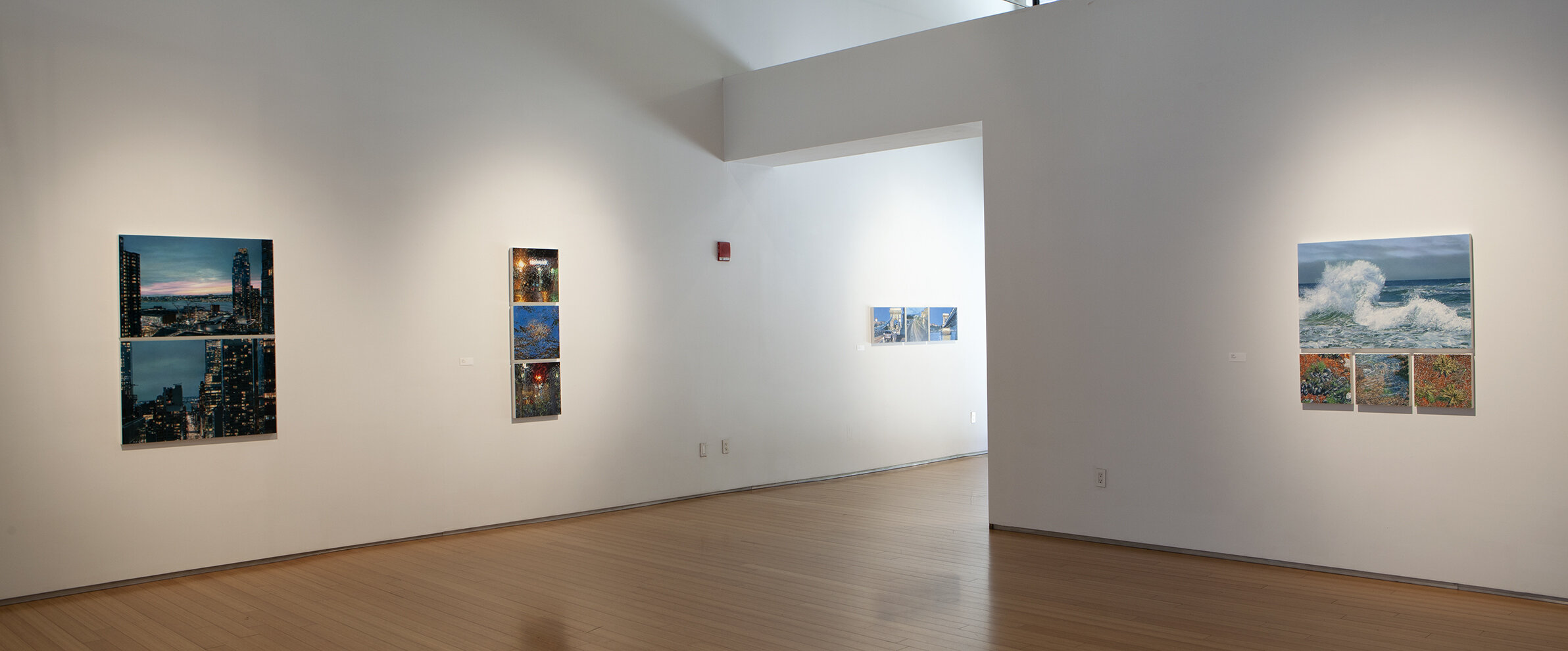
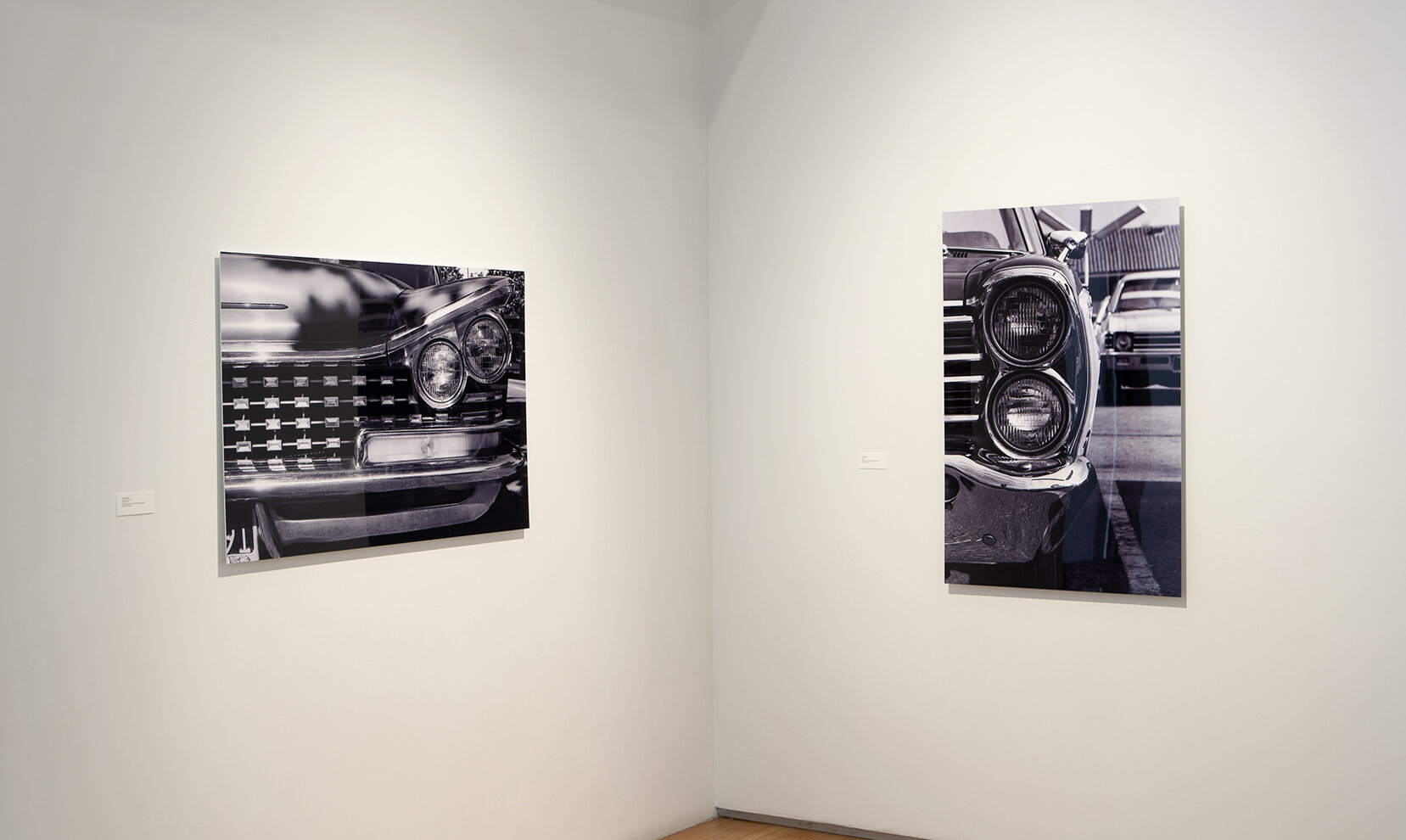


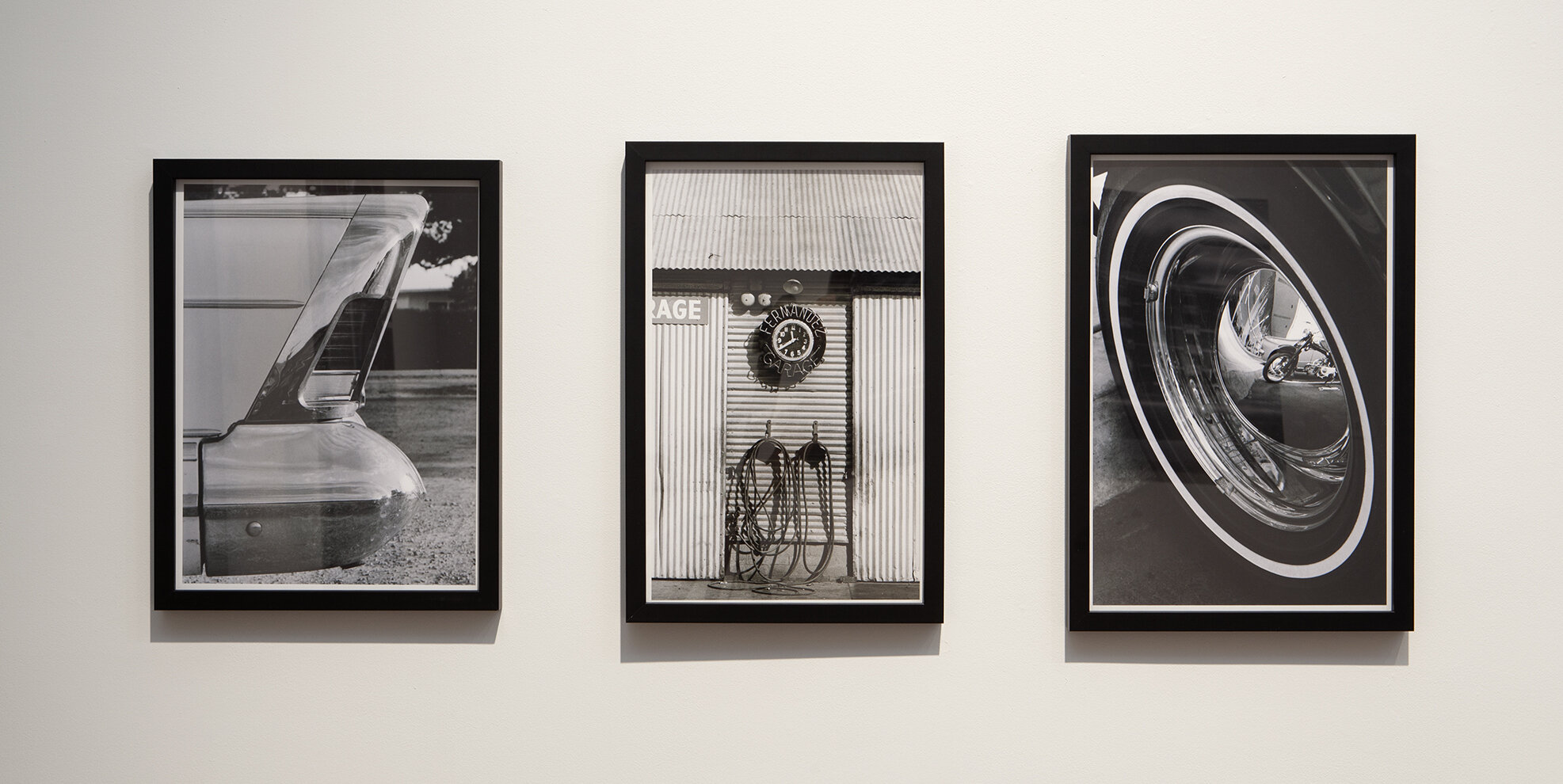
Exhibition Catalogue:
